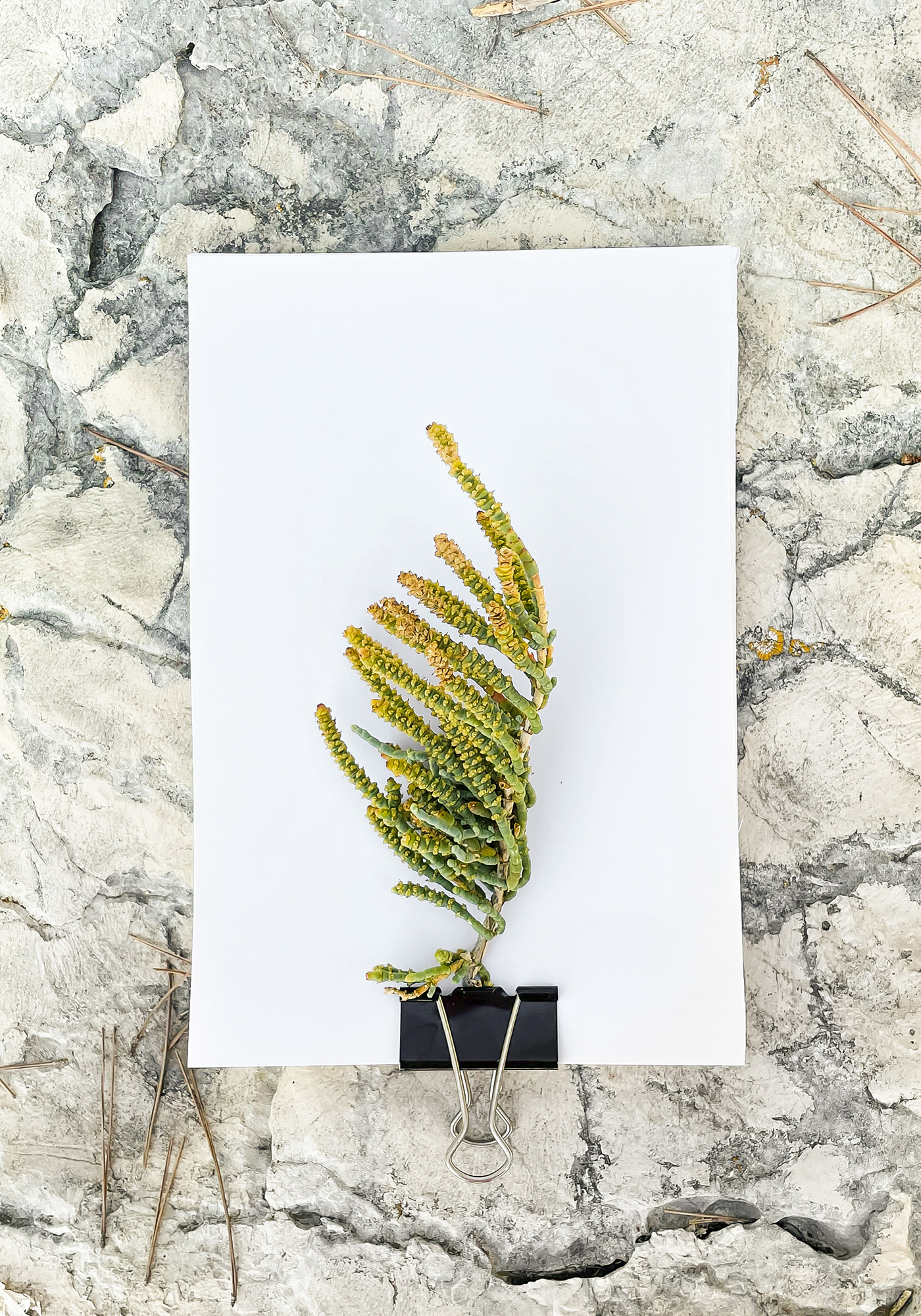
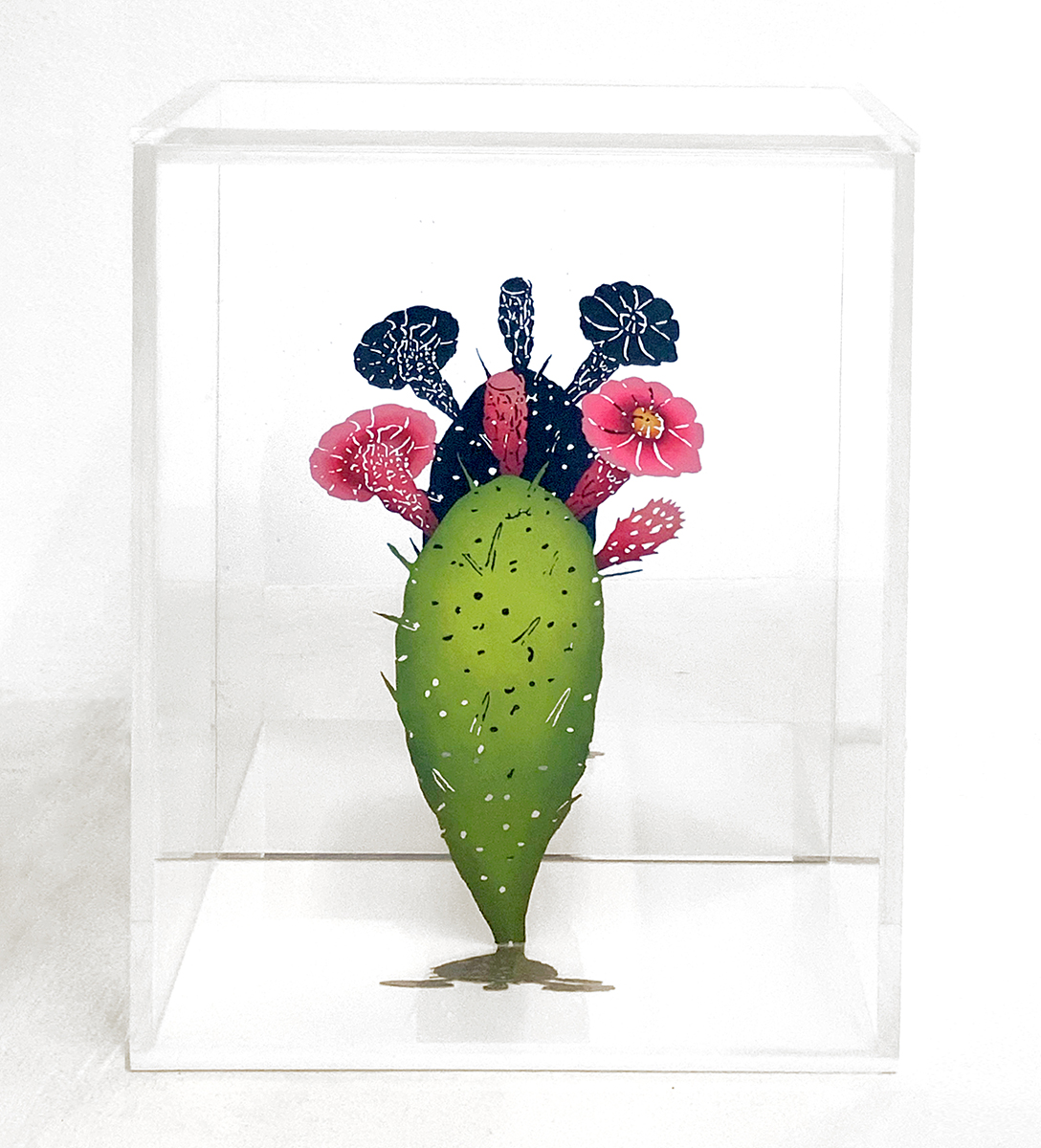
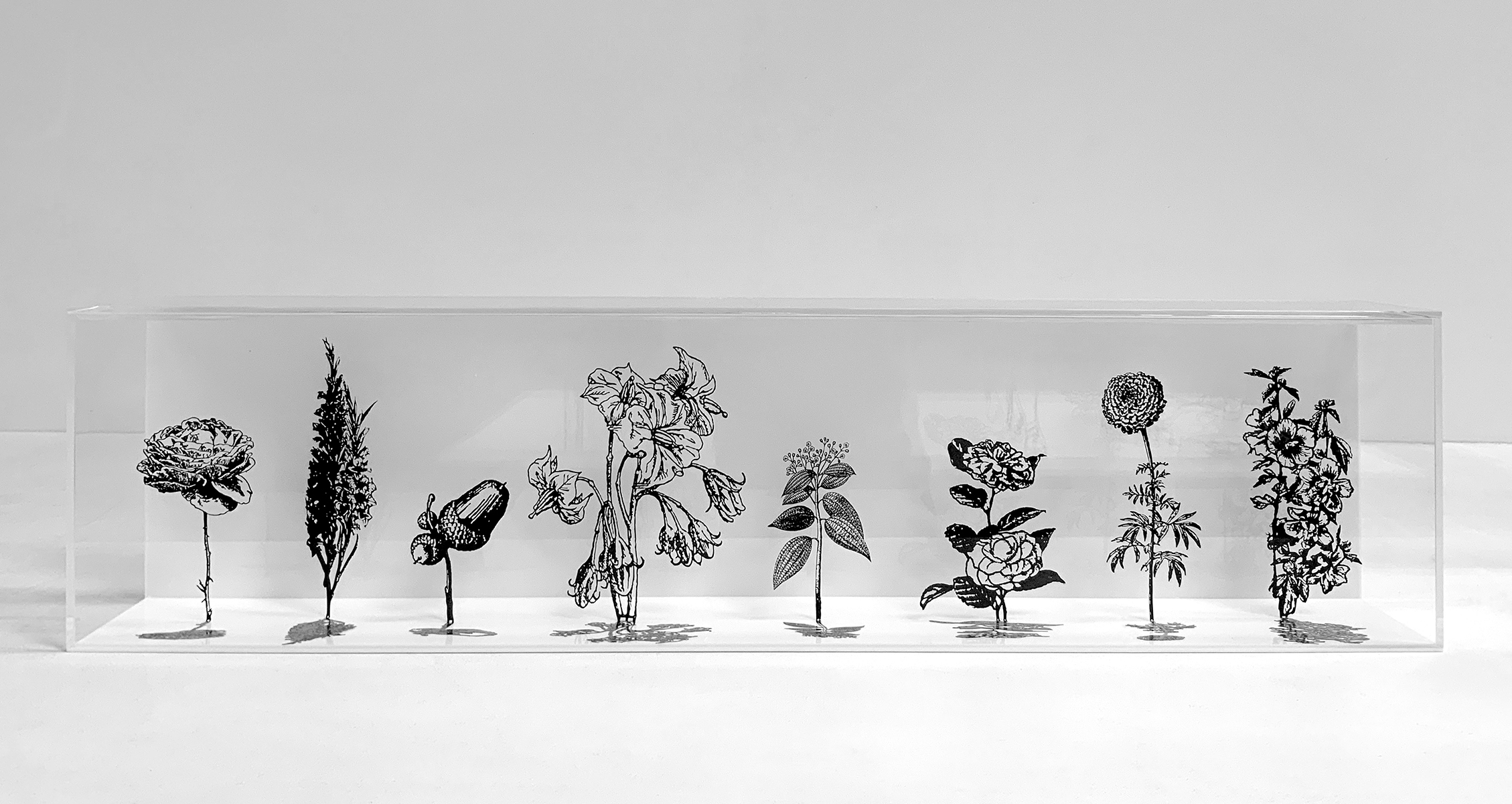
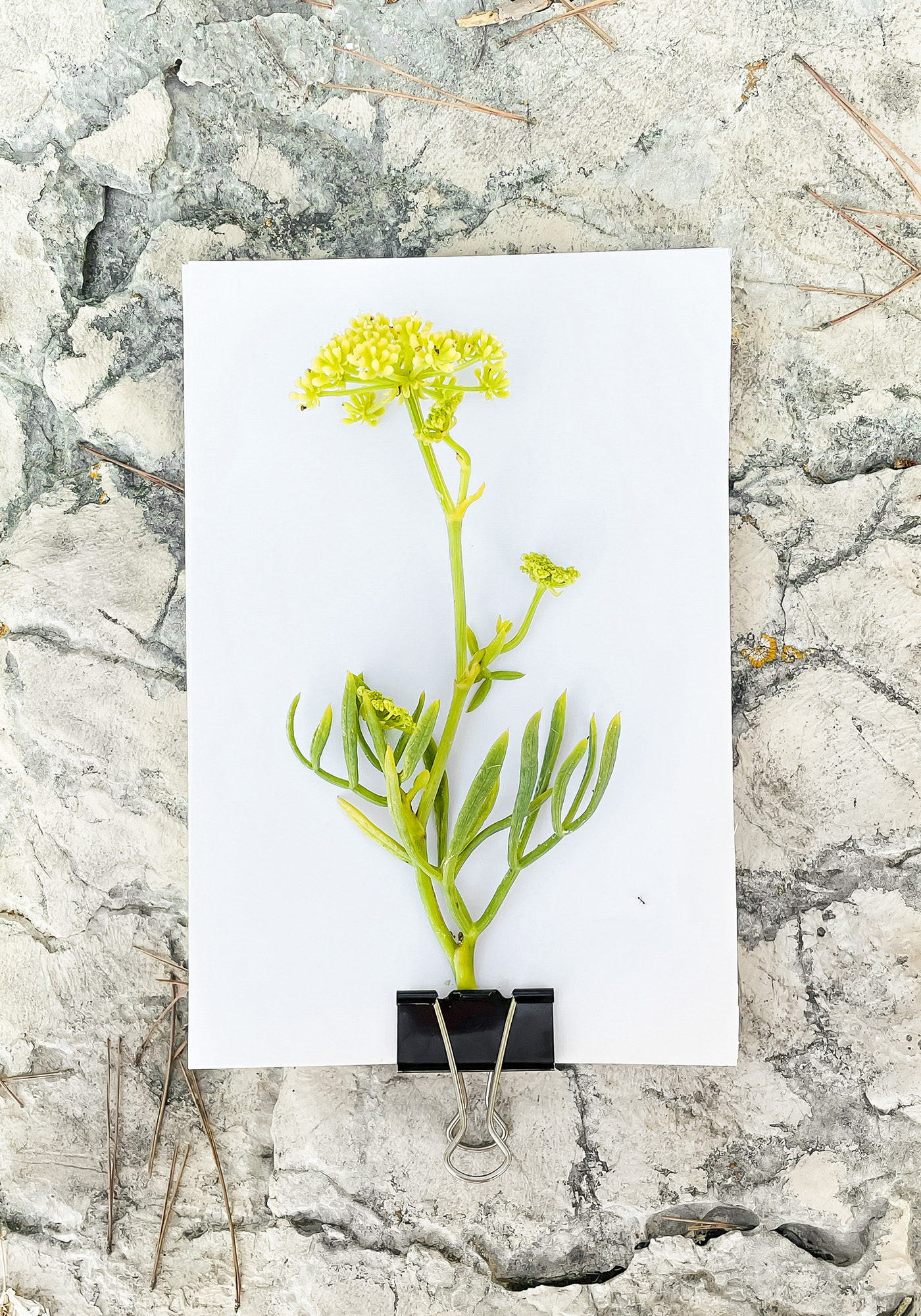
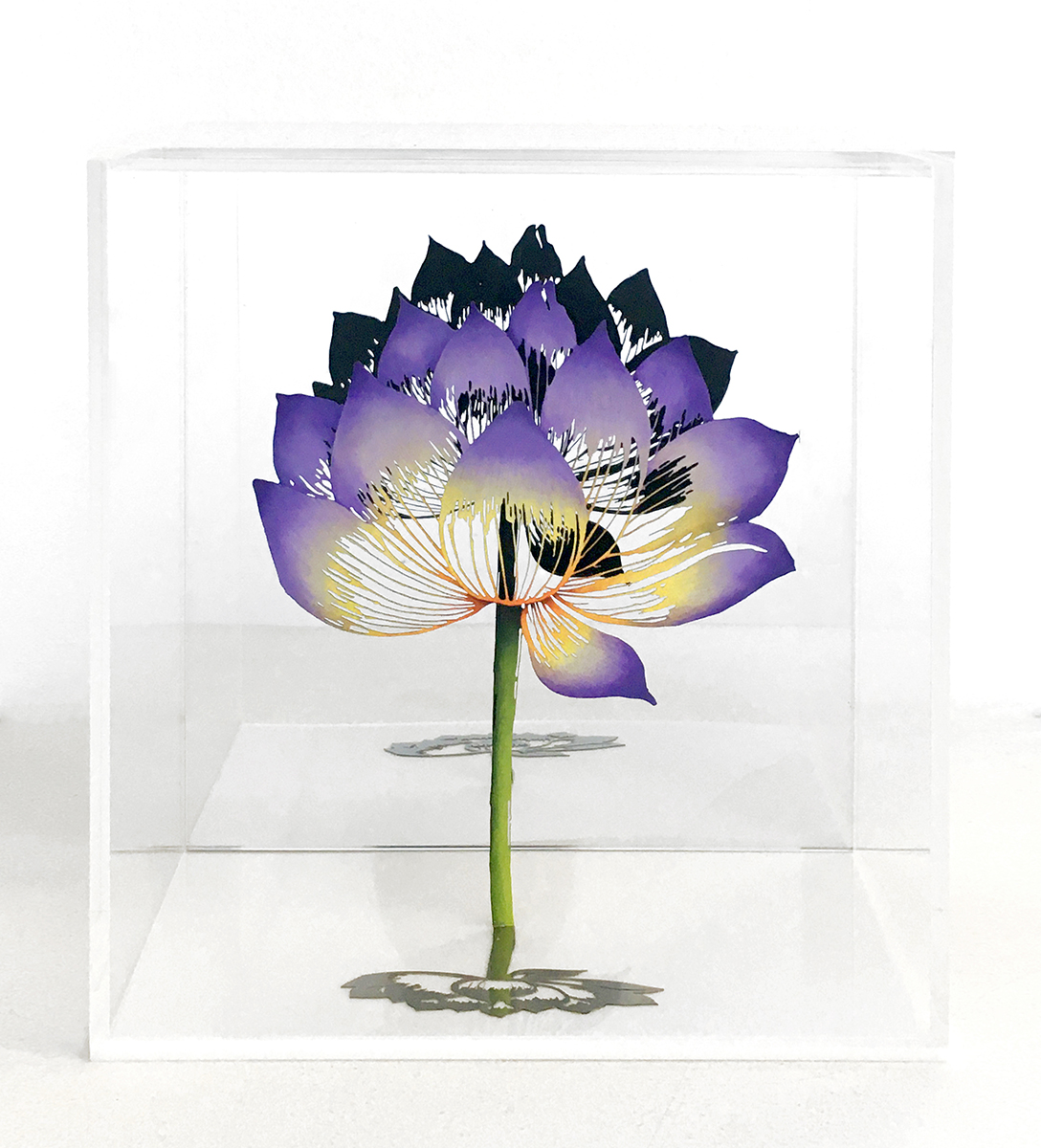
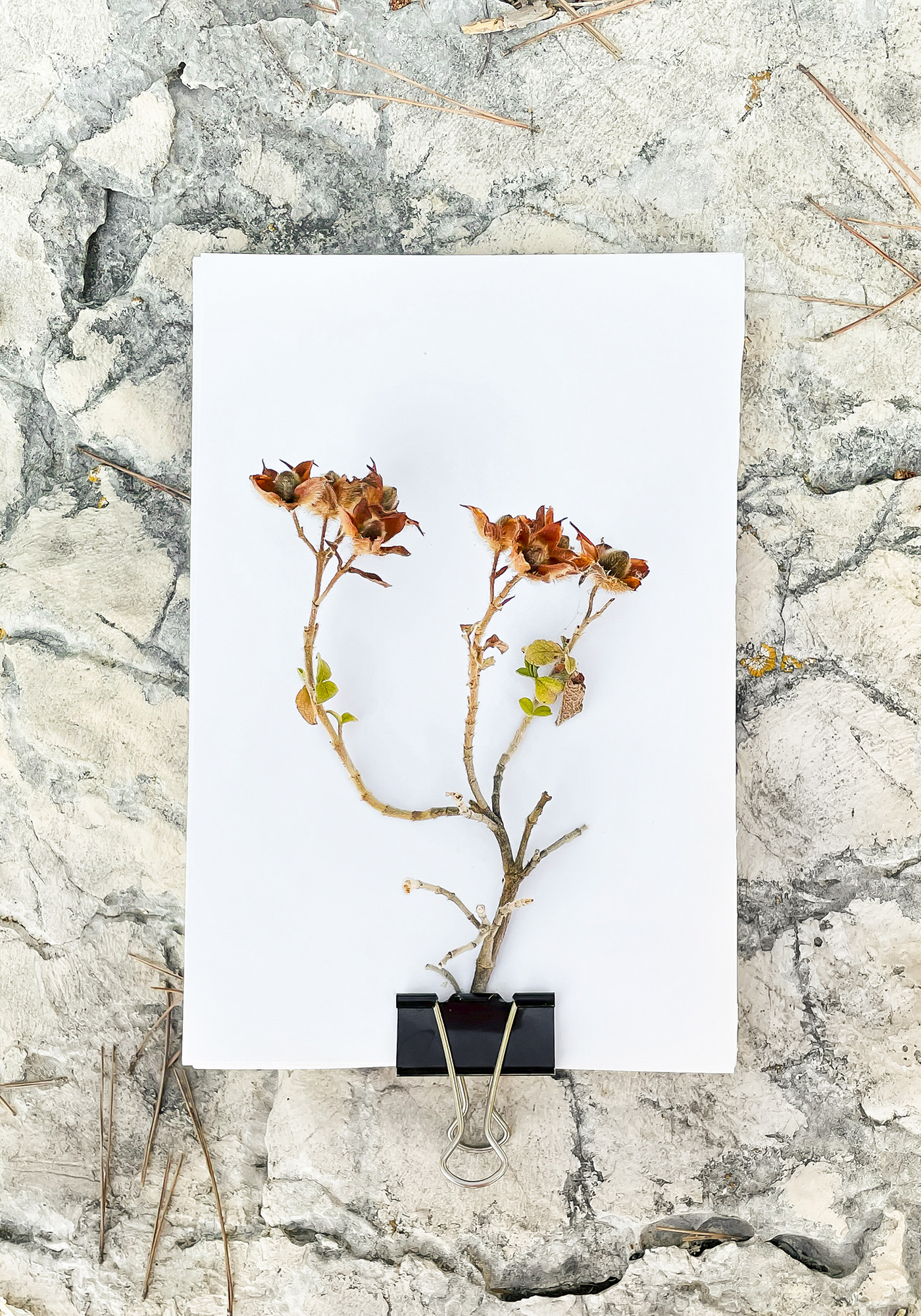
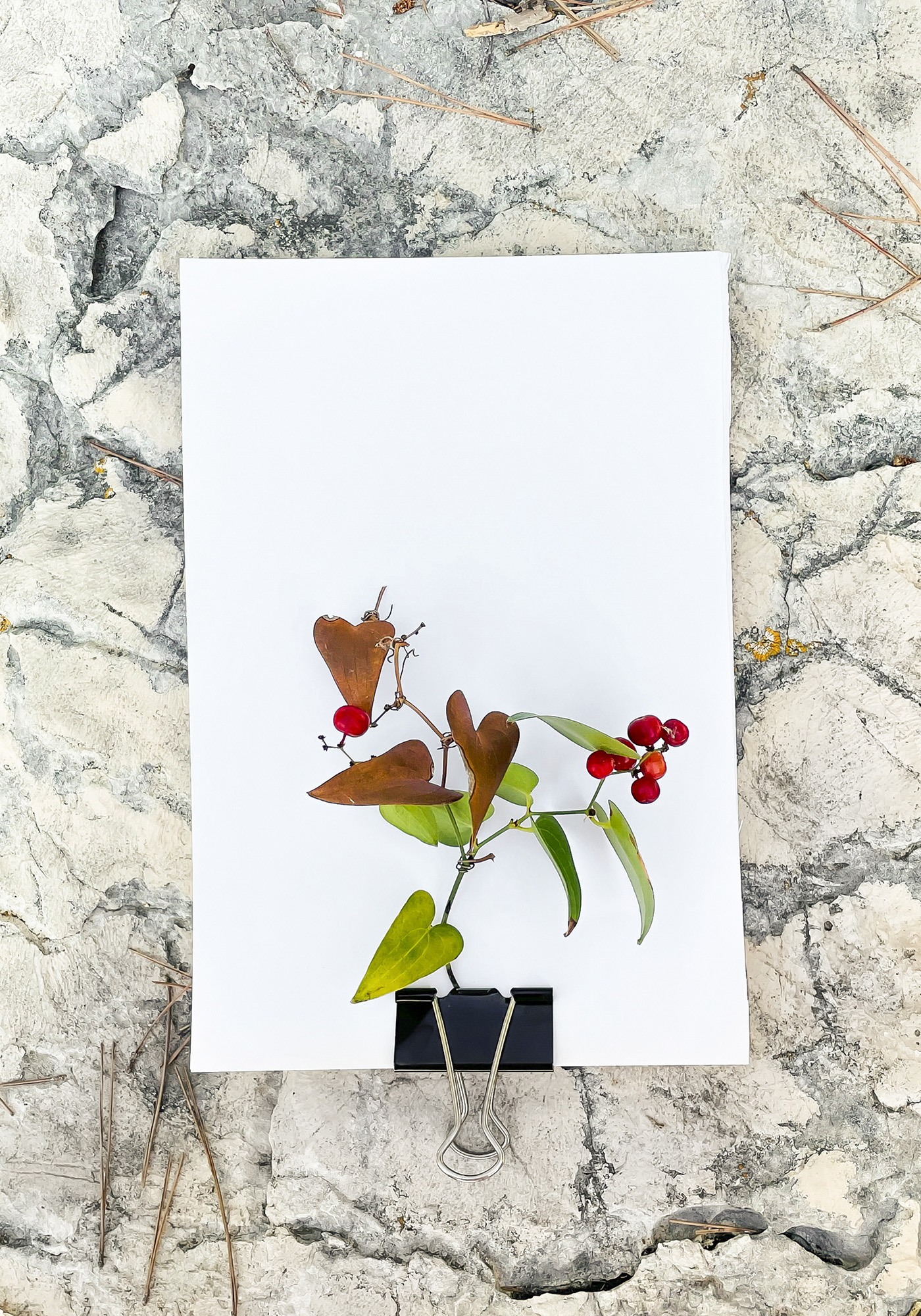
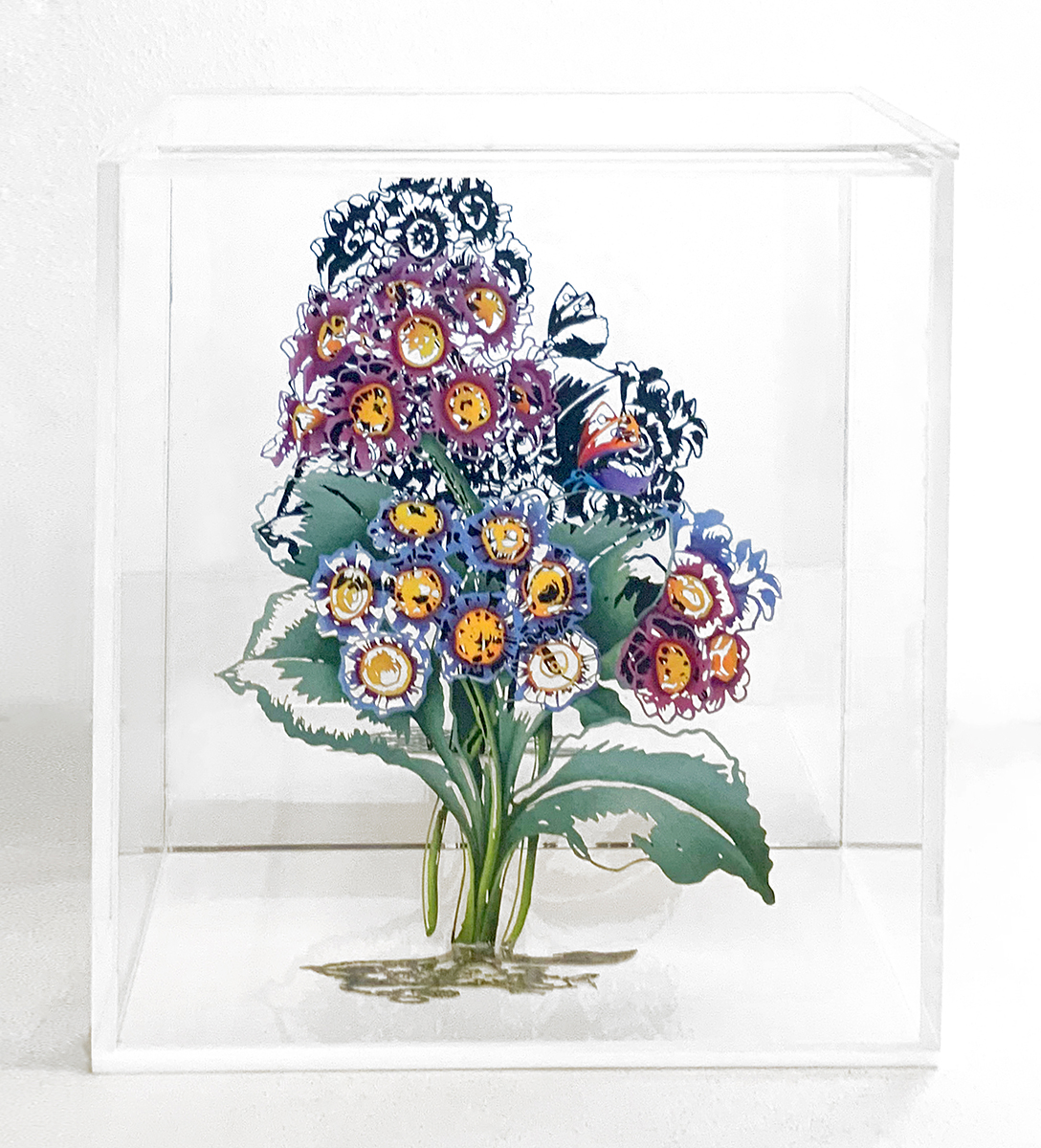
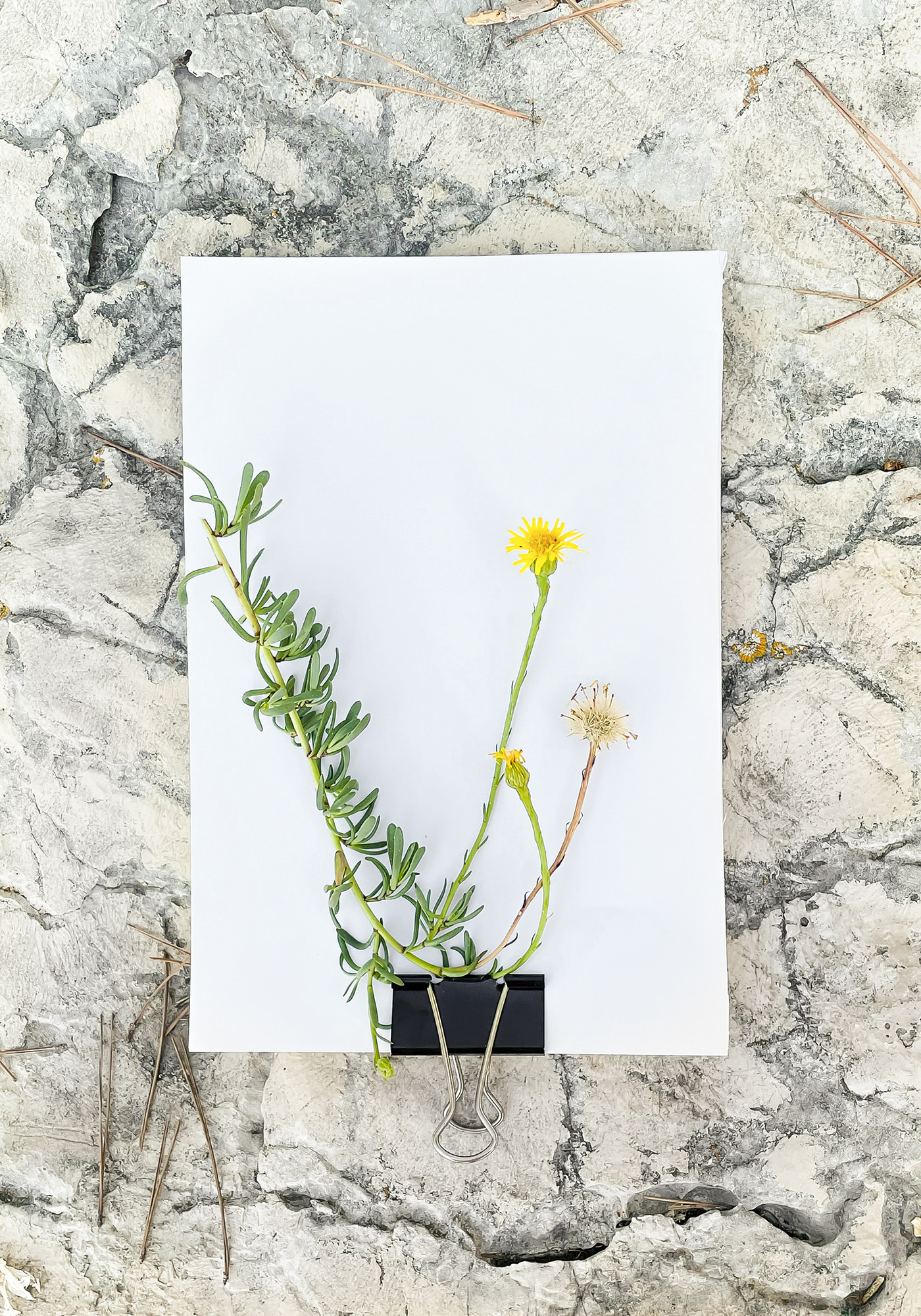
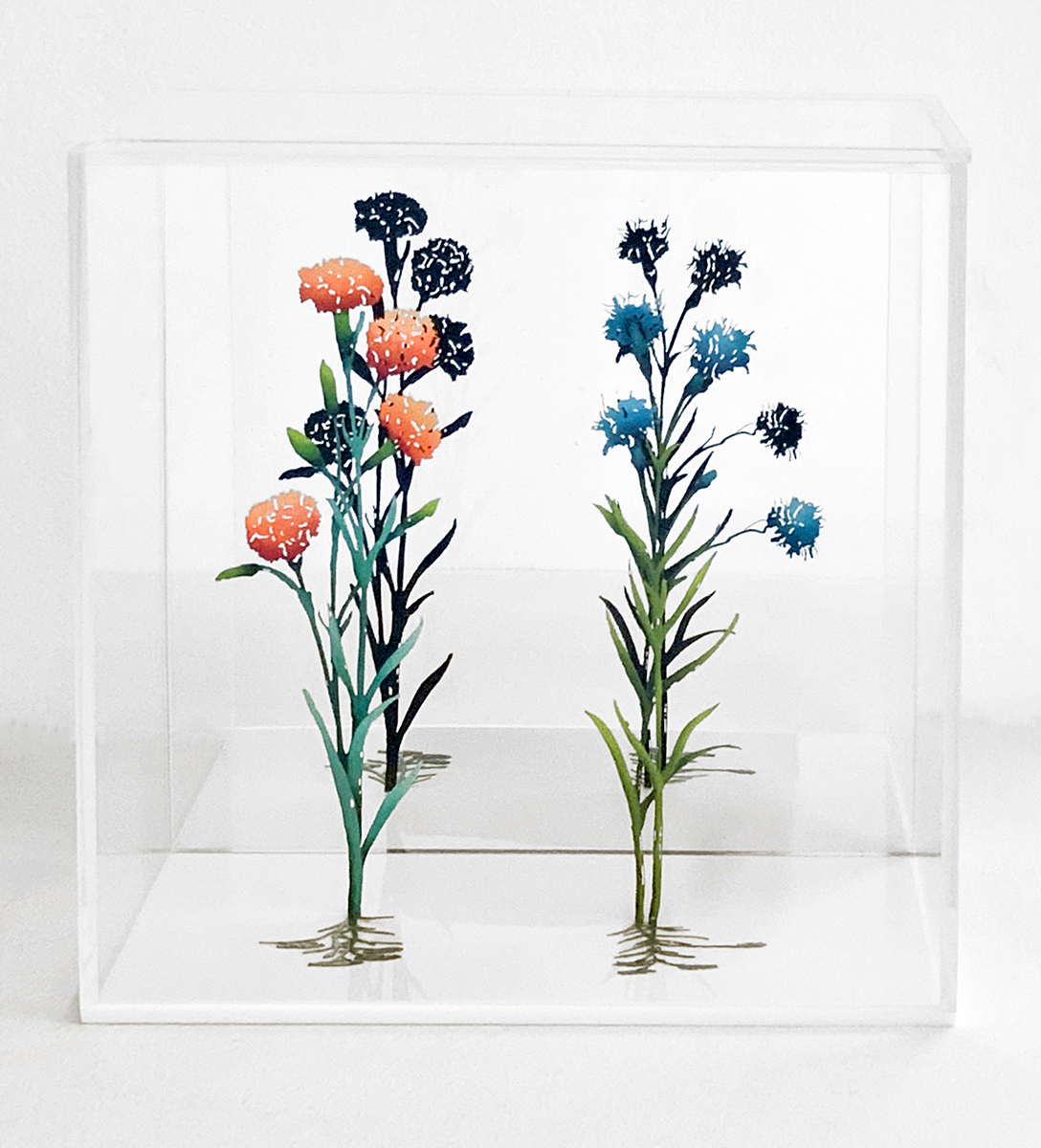
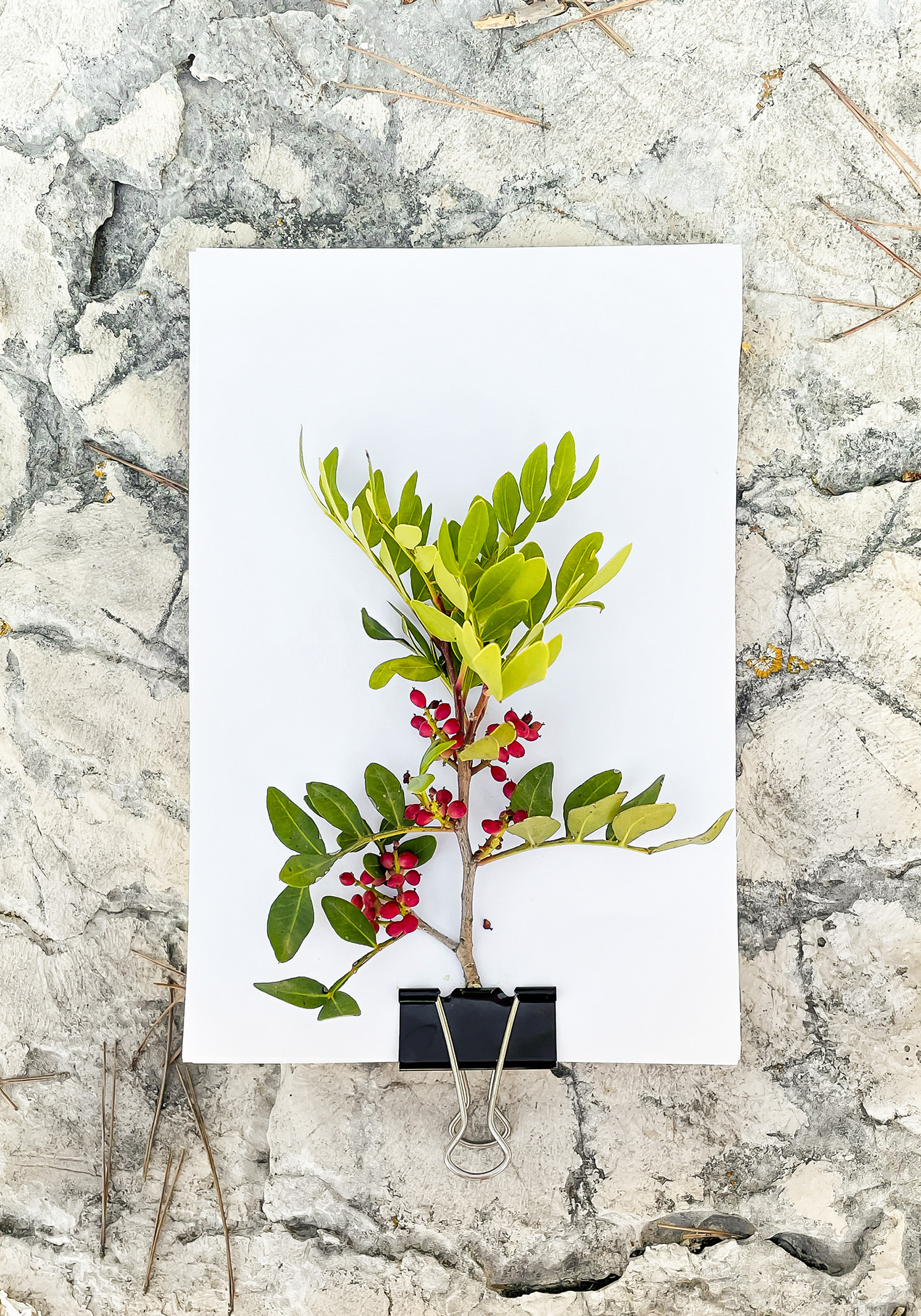
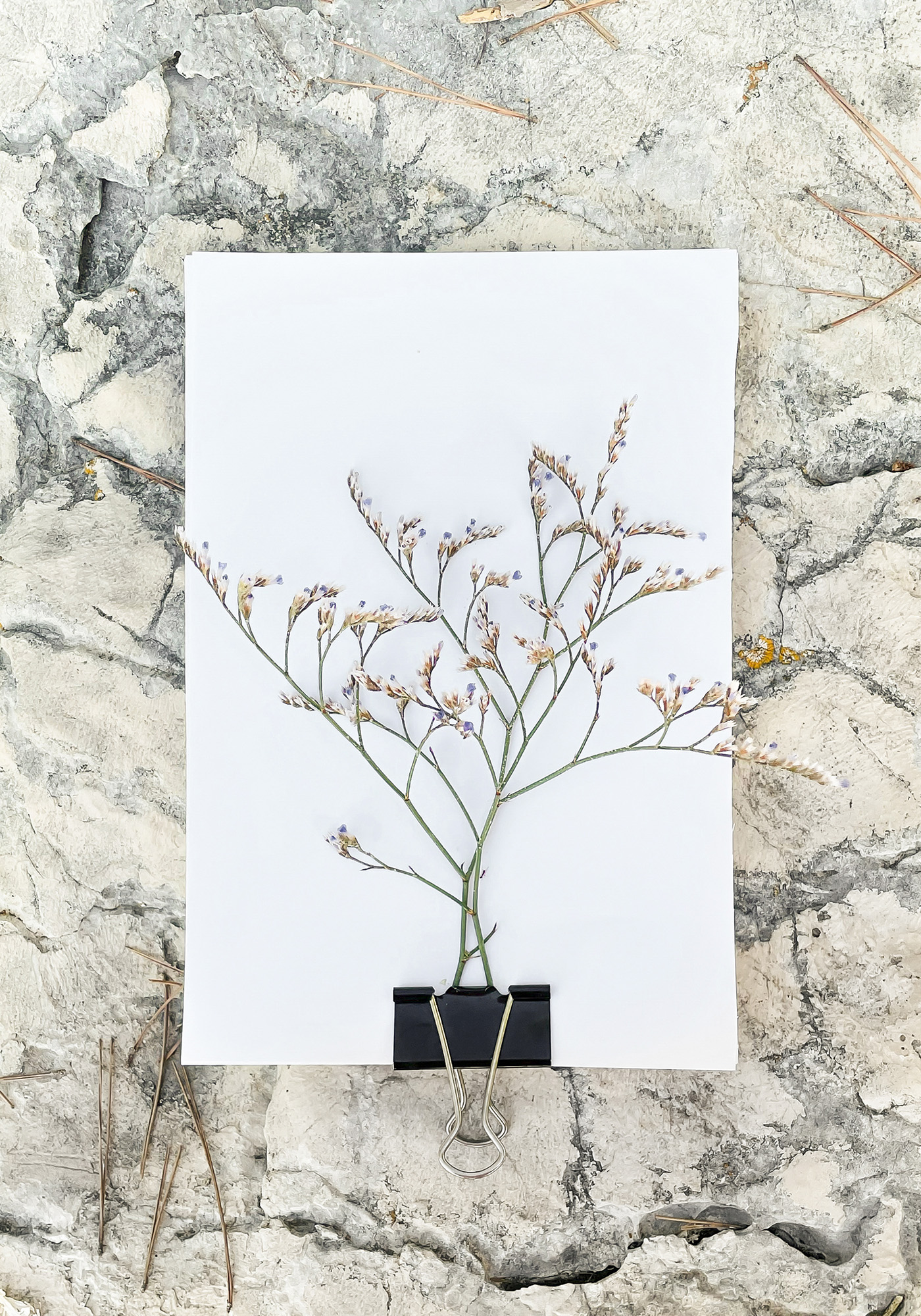
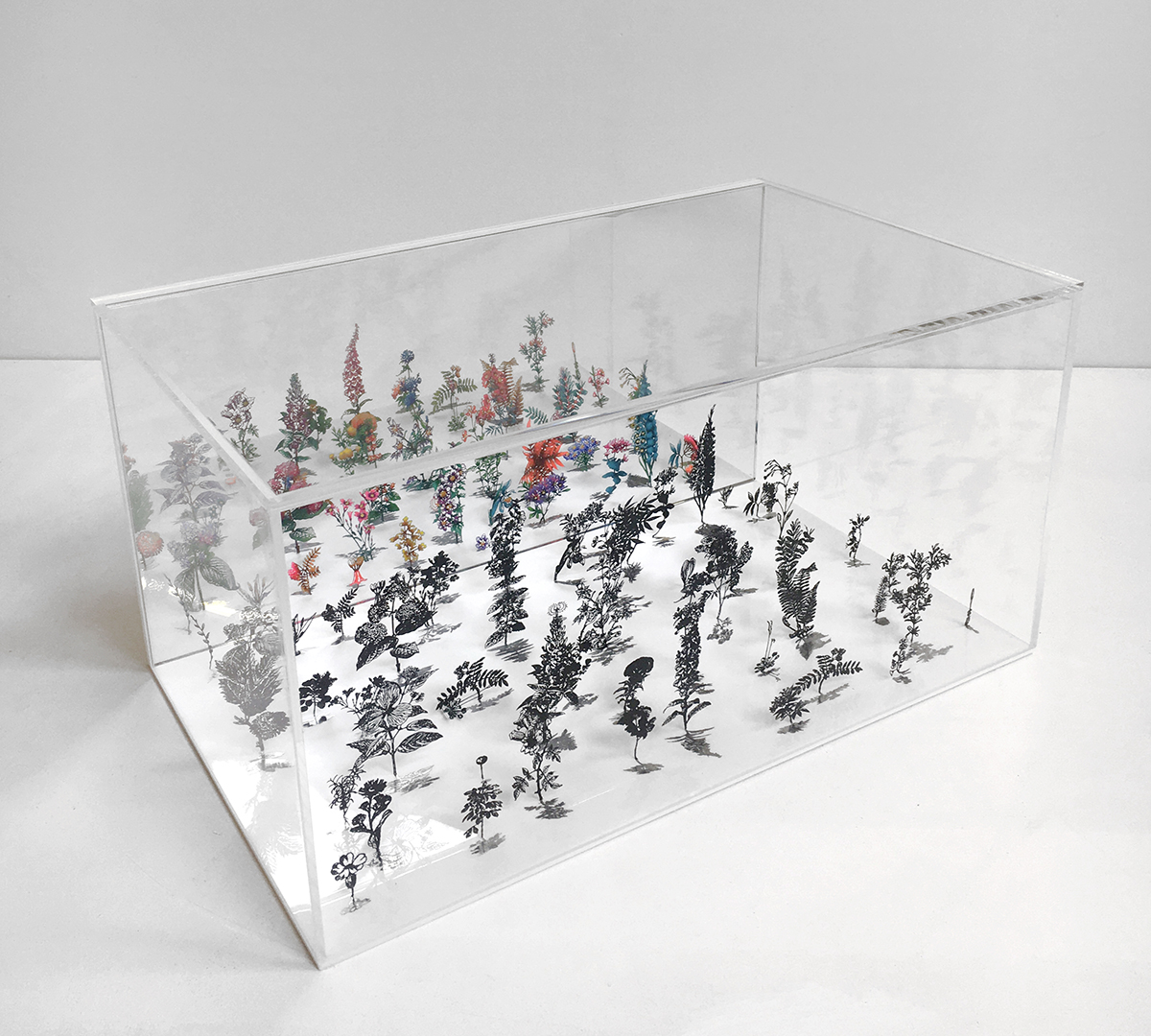
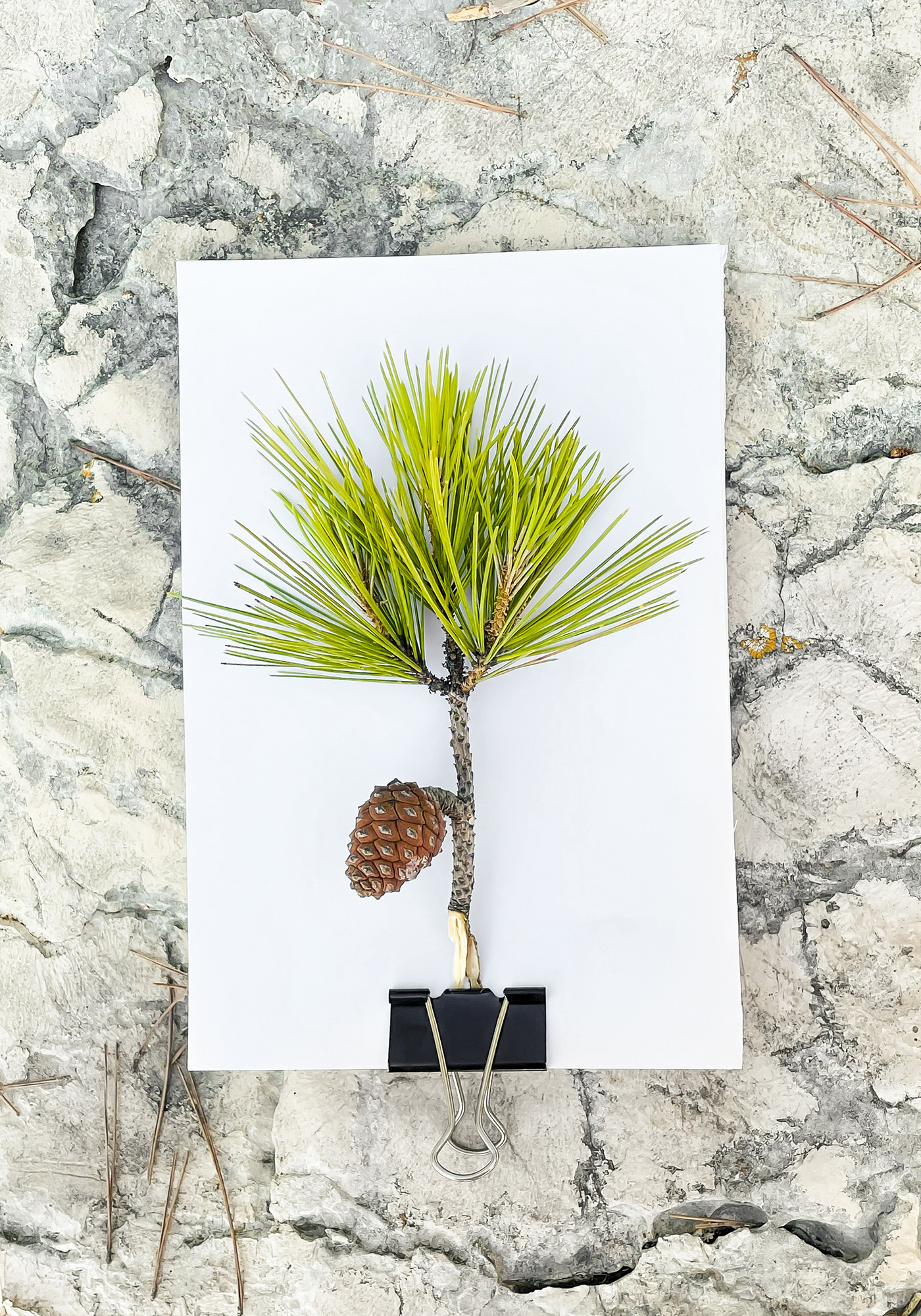
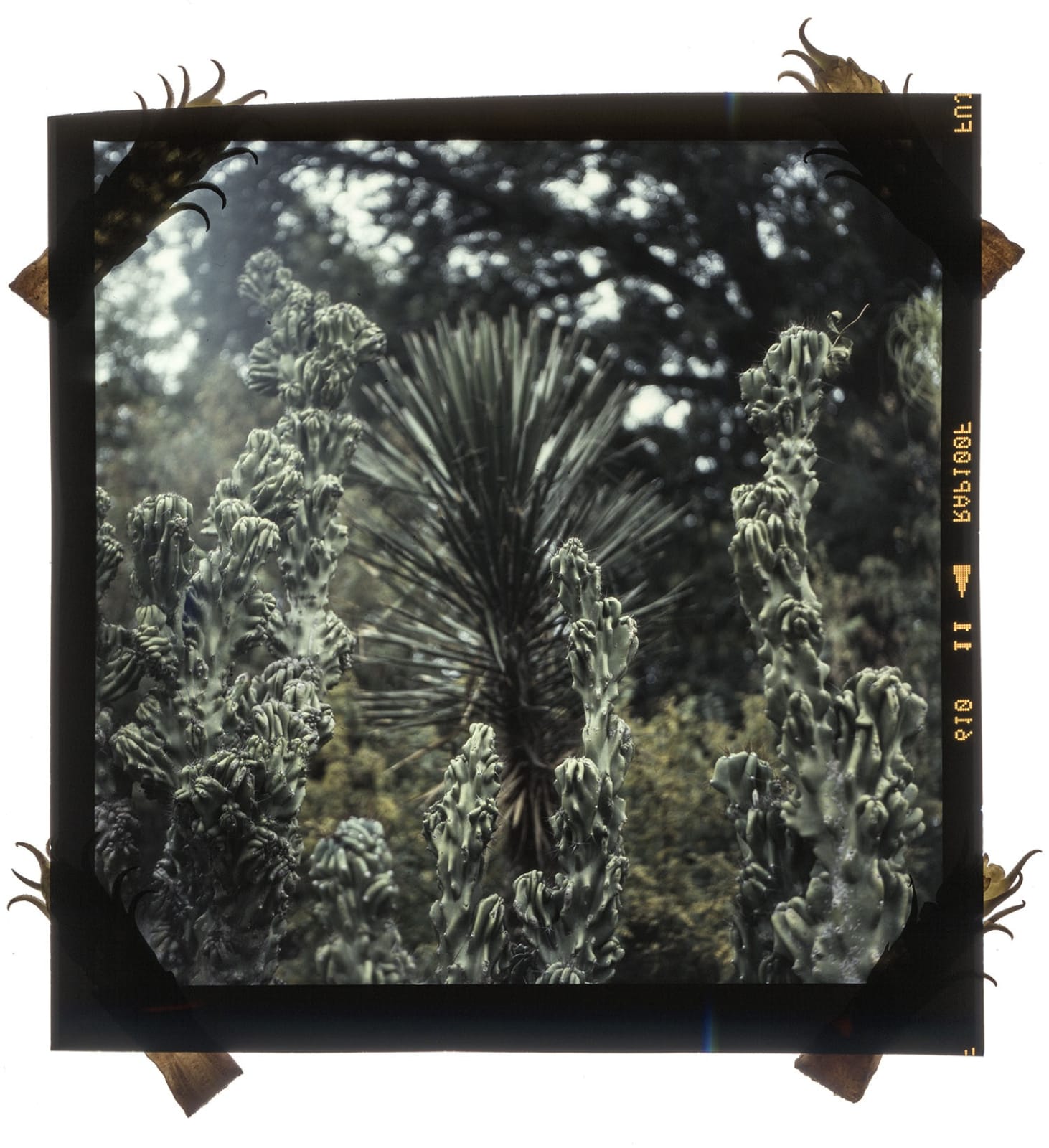
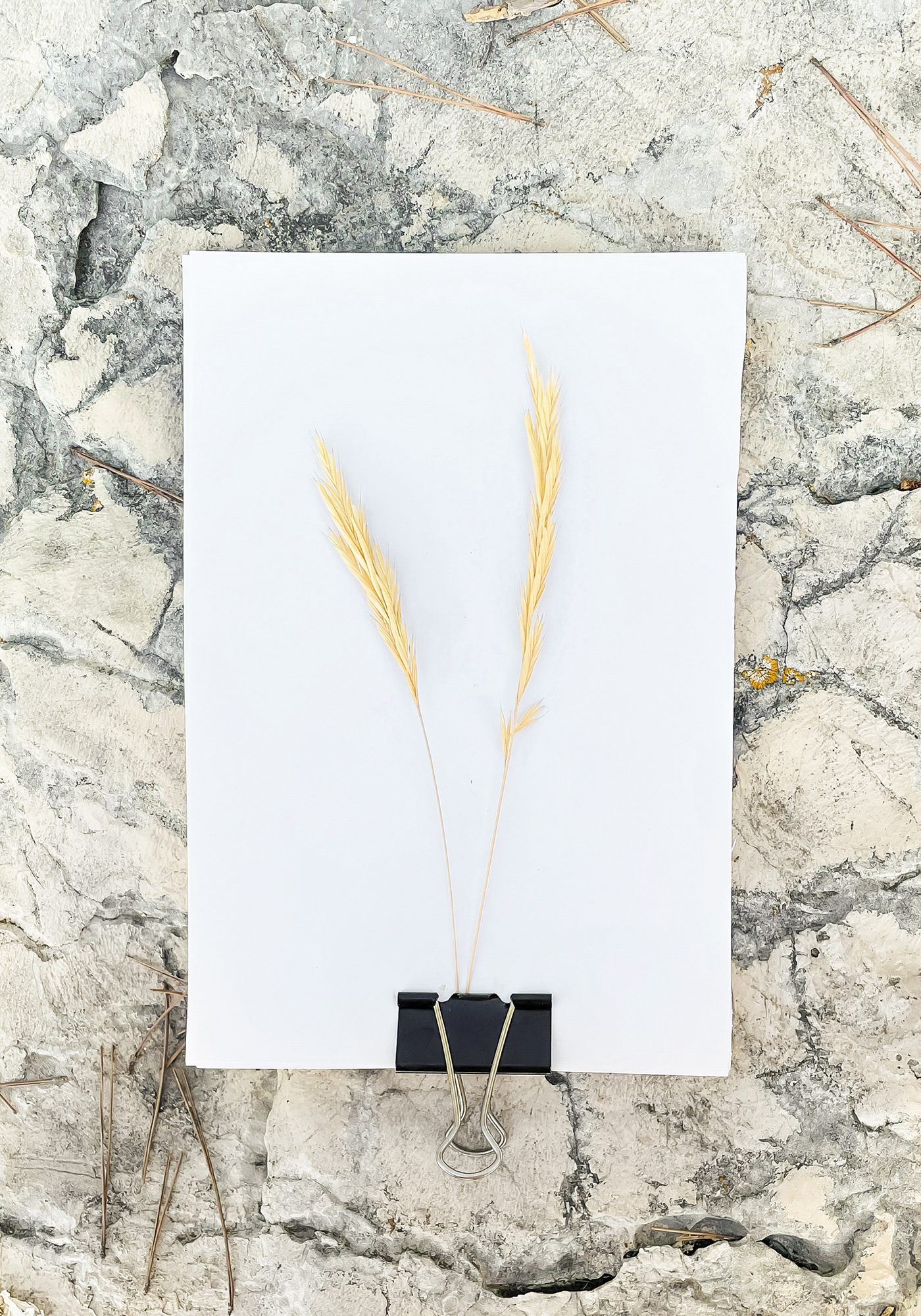
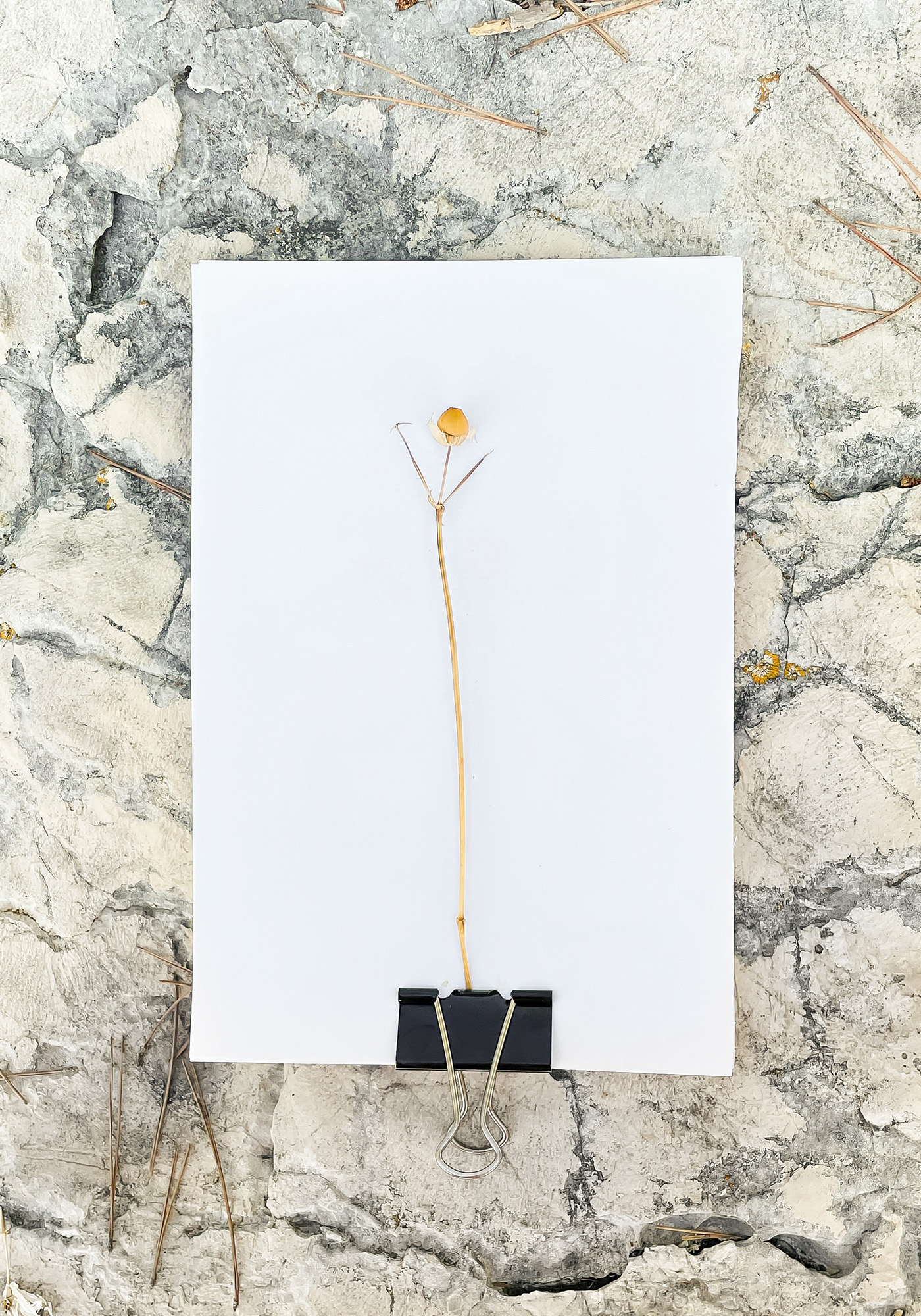
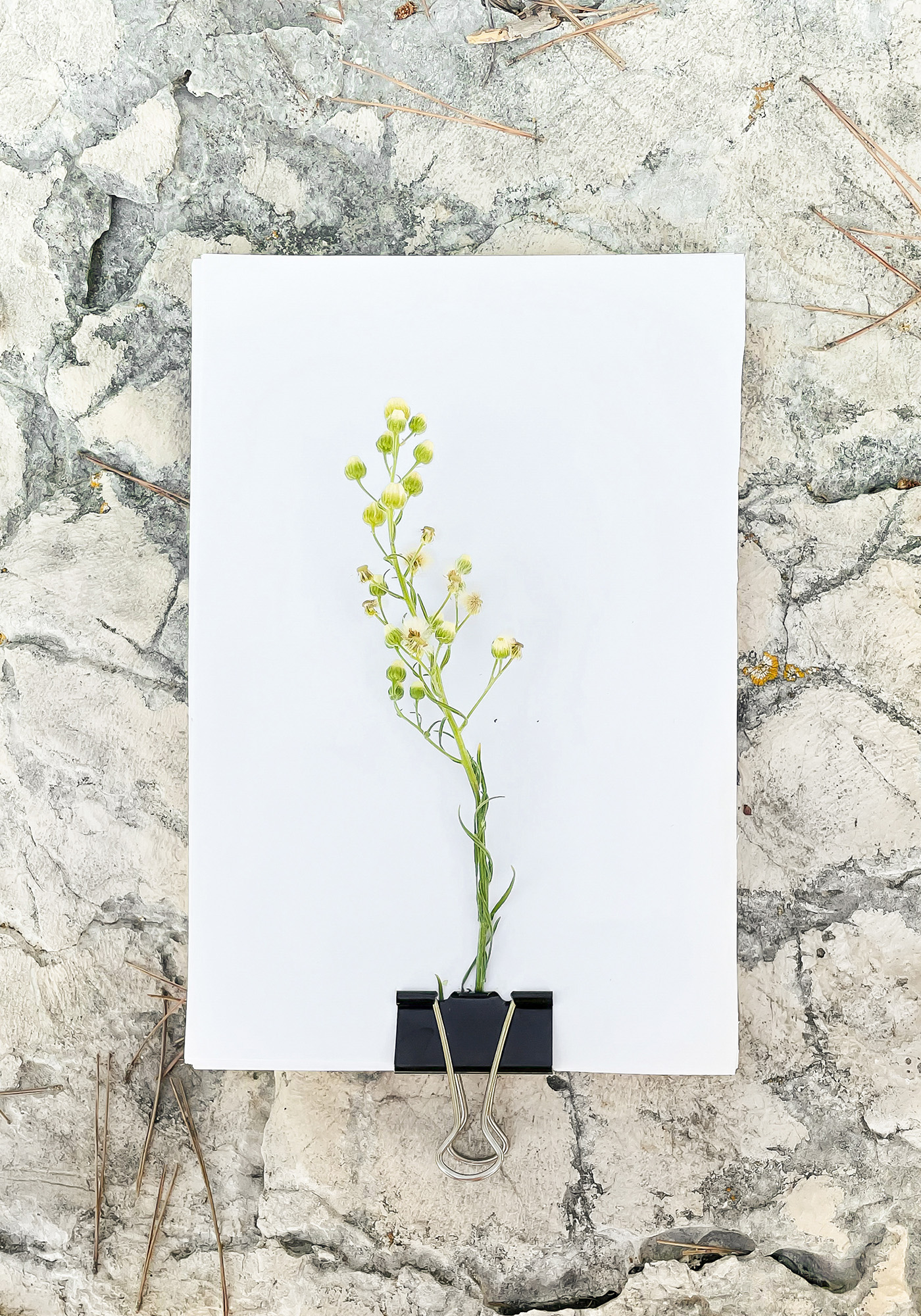
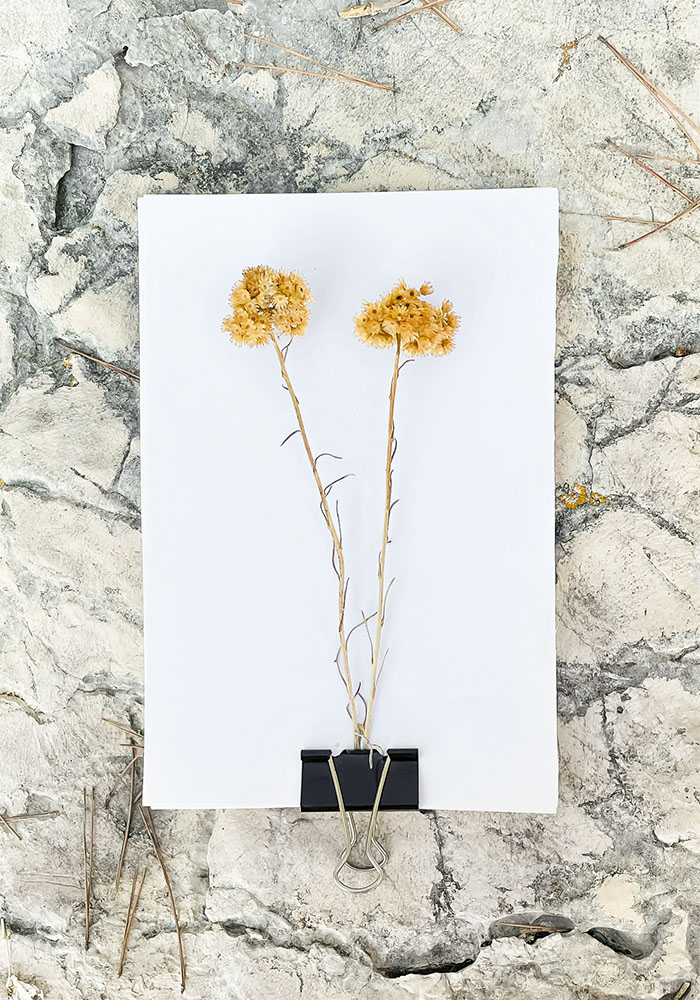
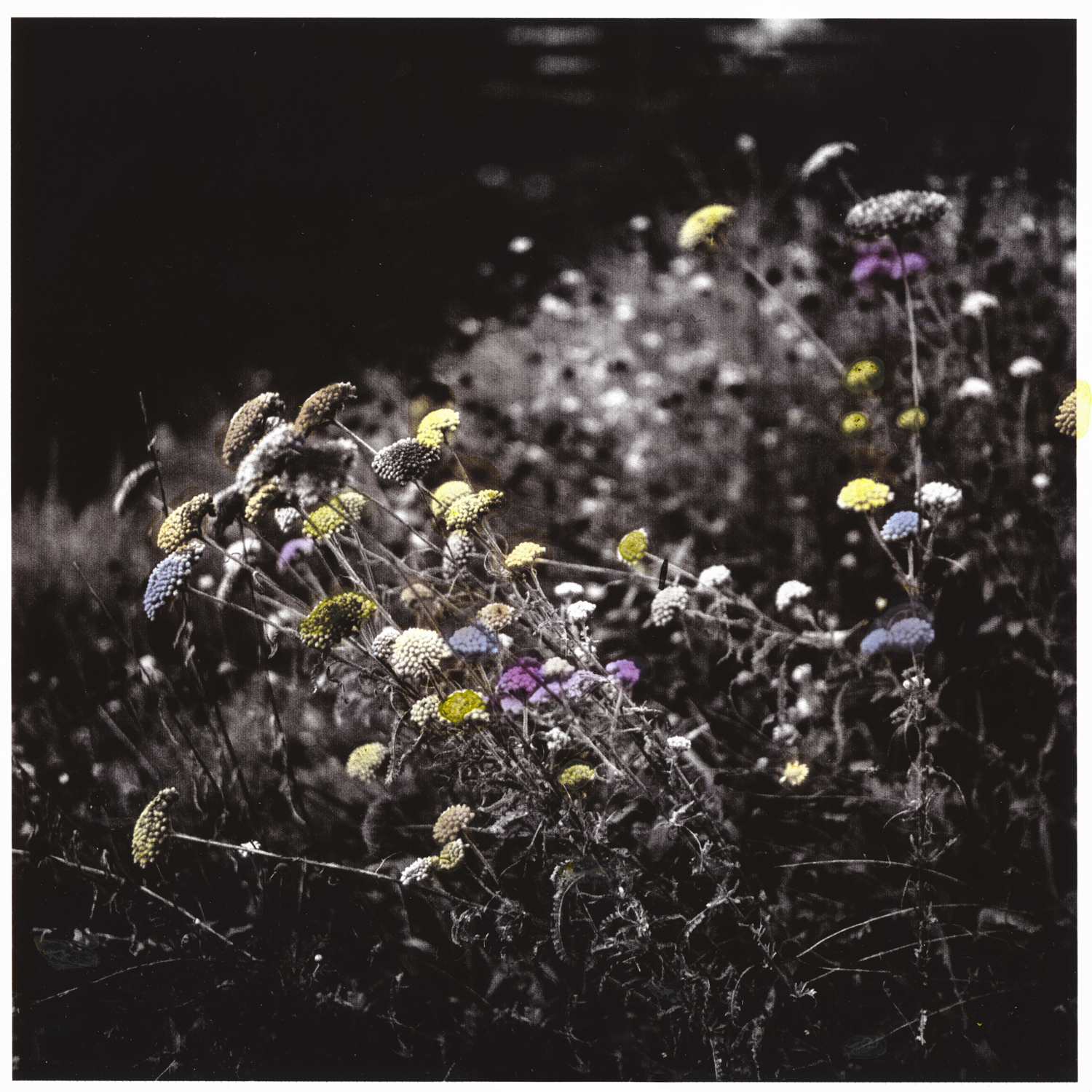
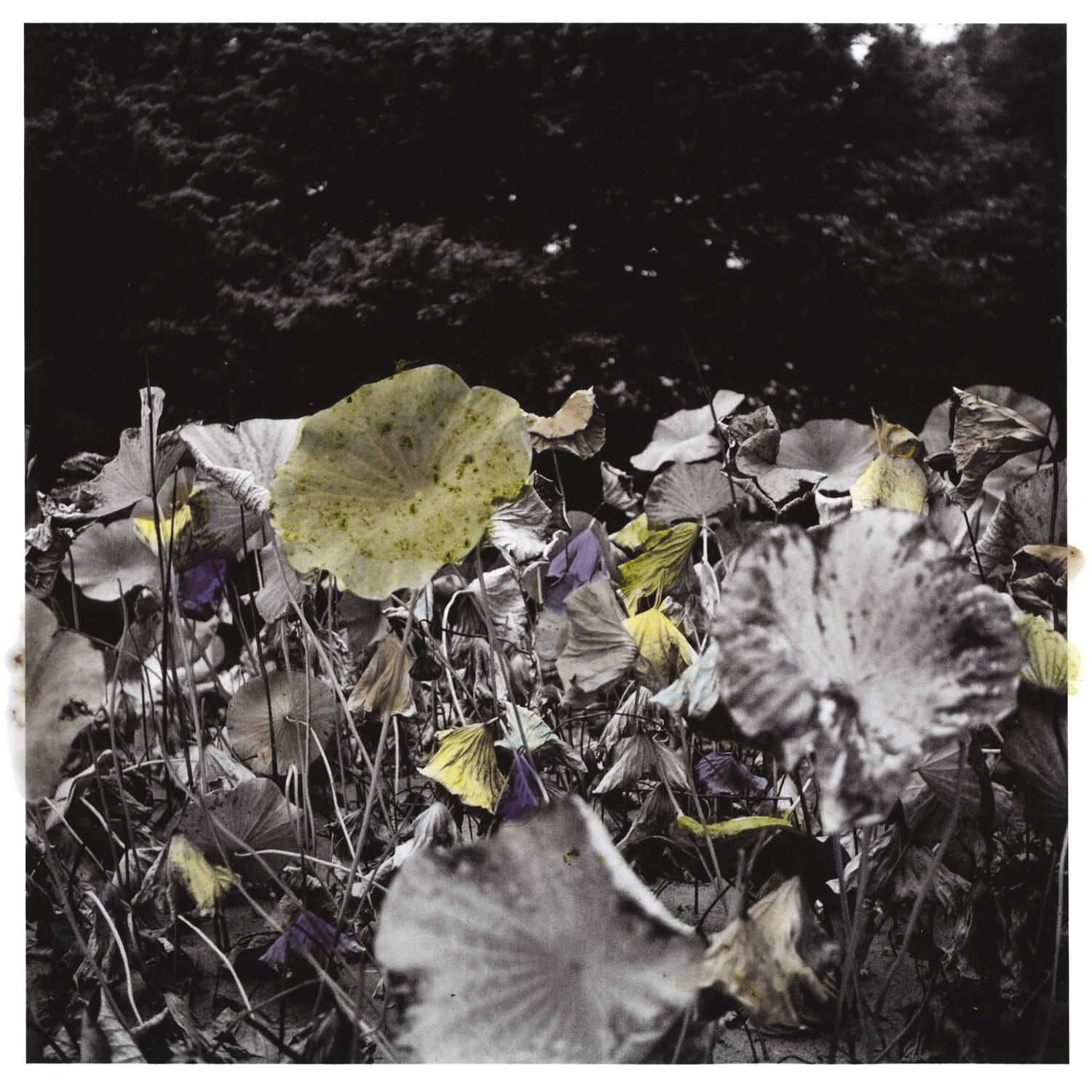
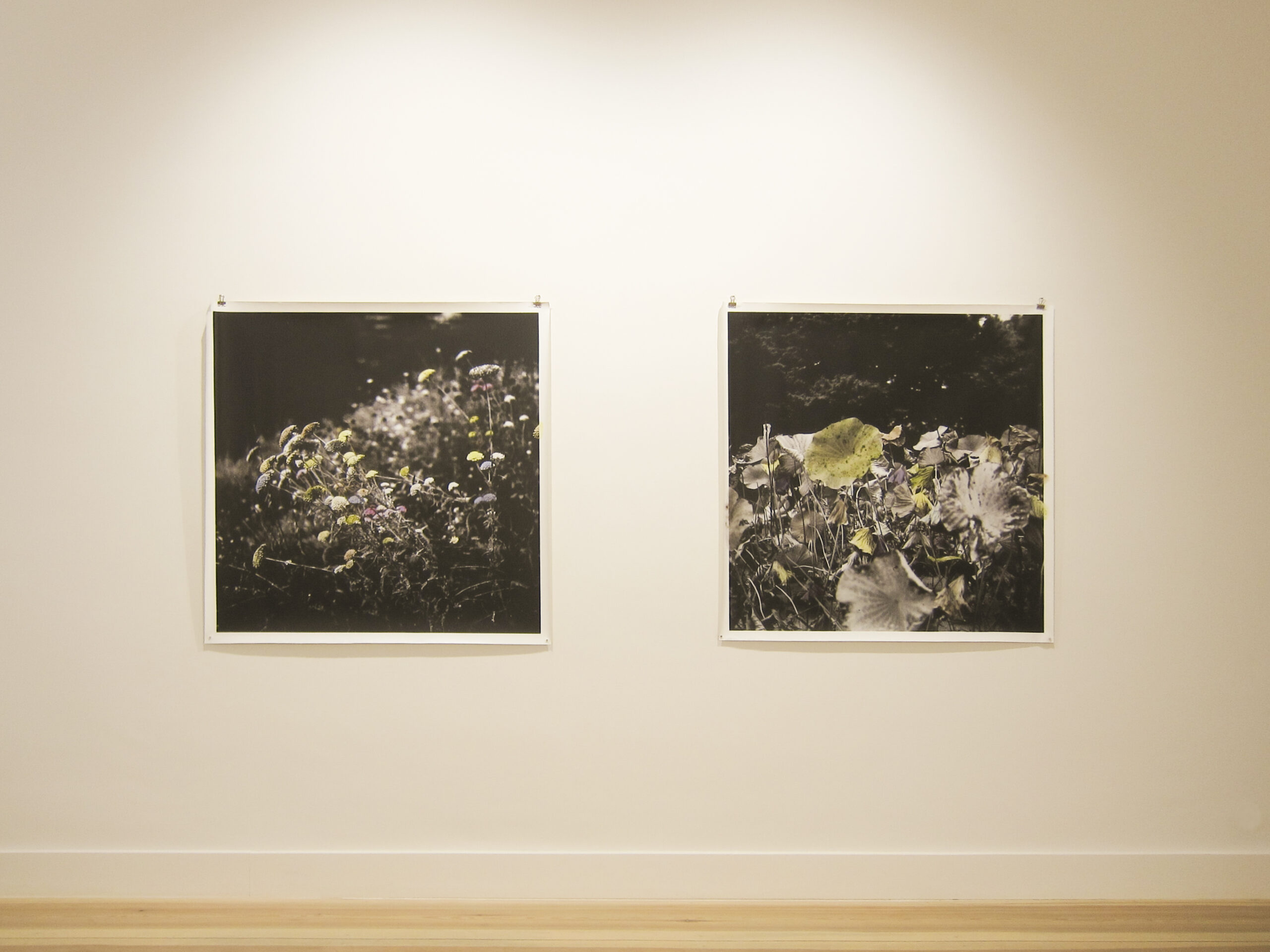

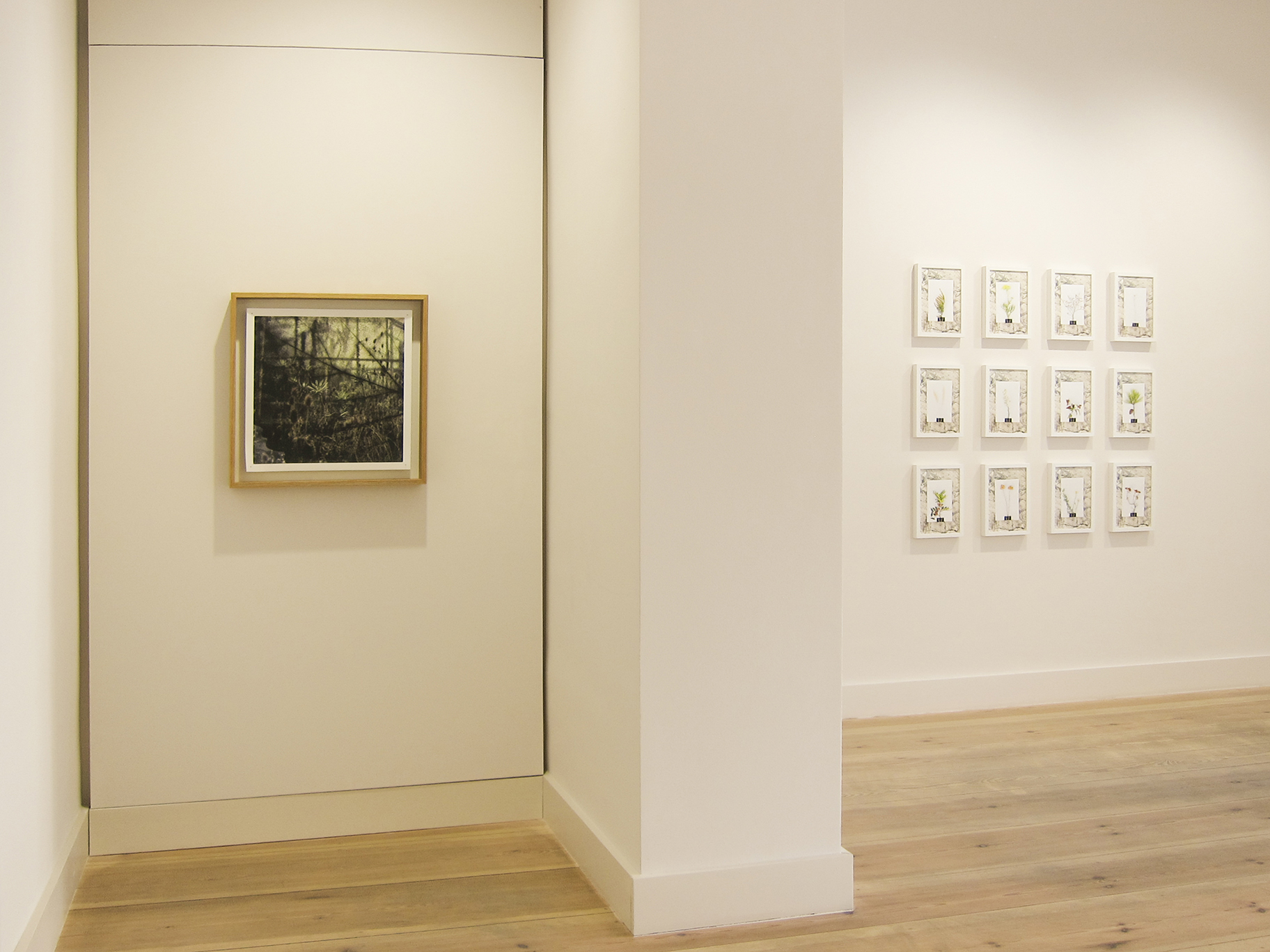
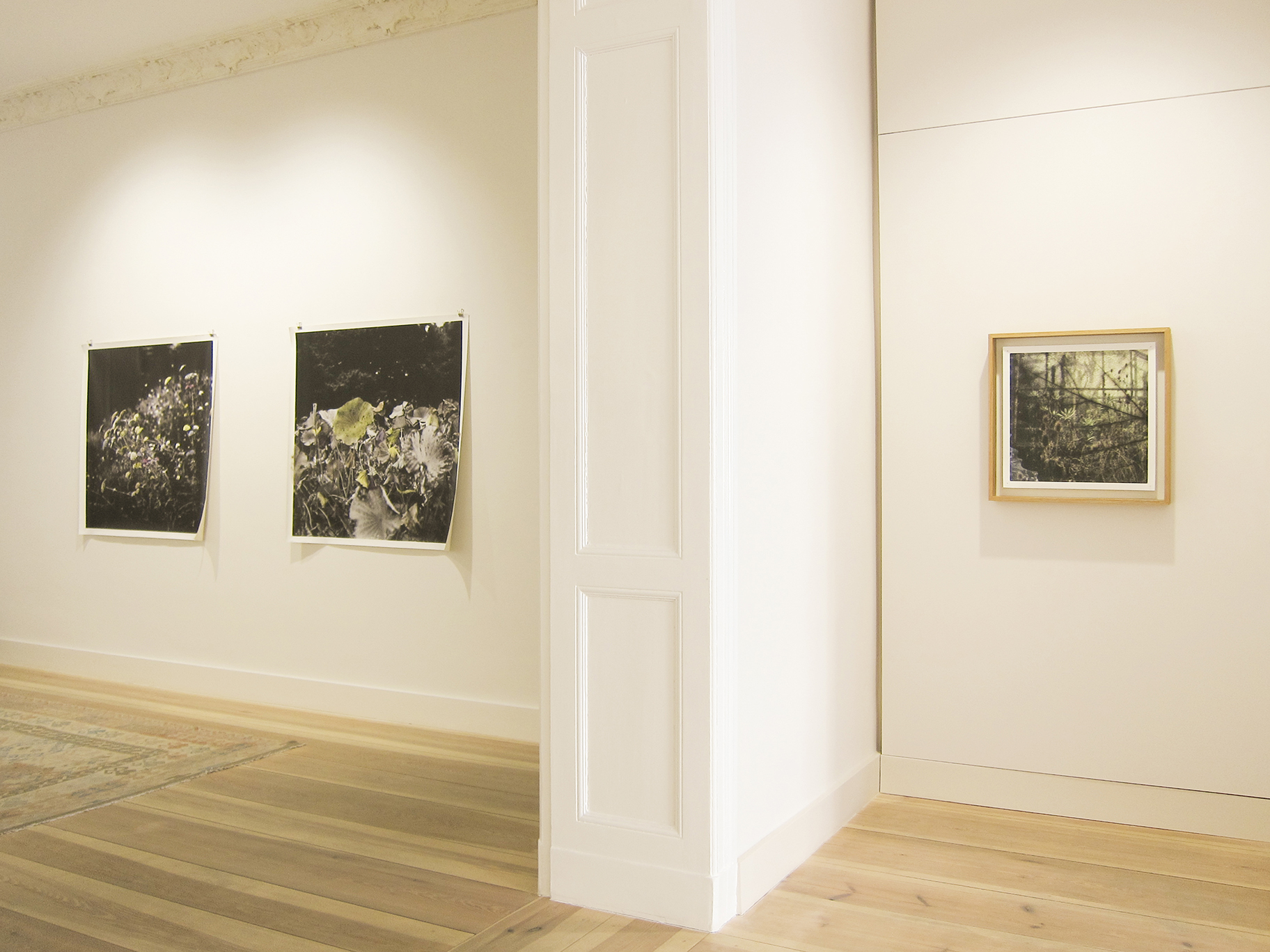
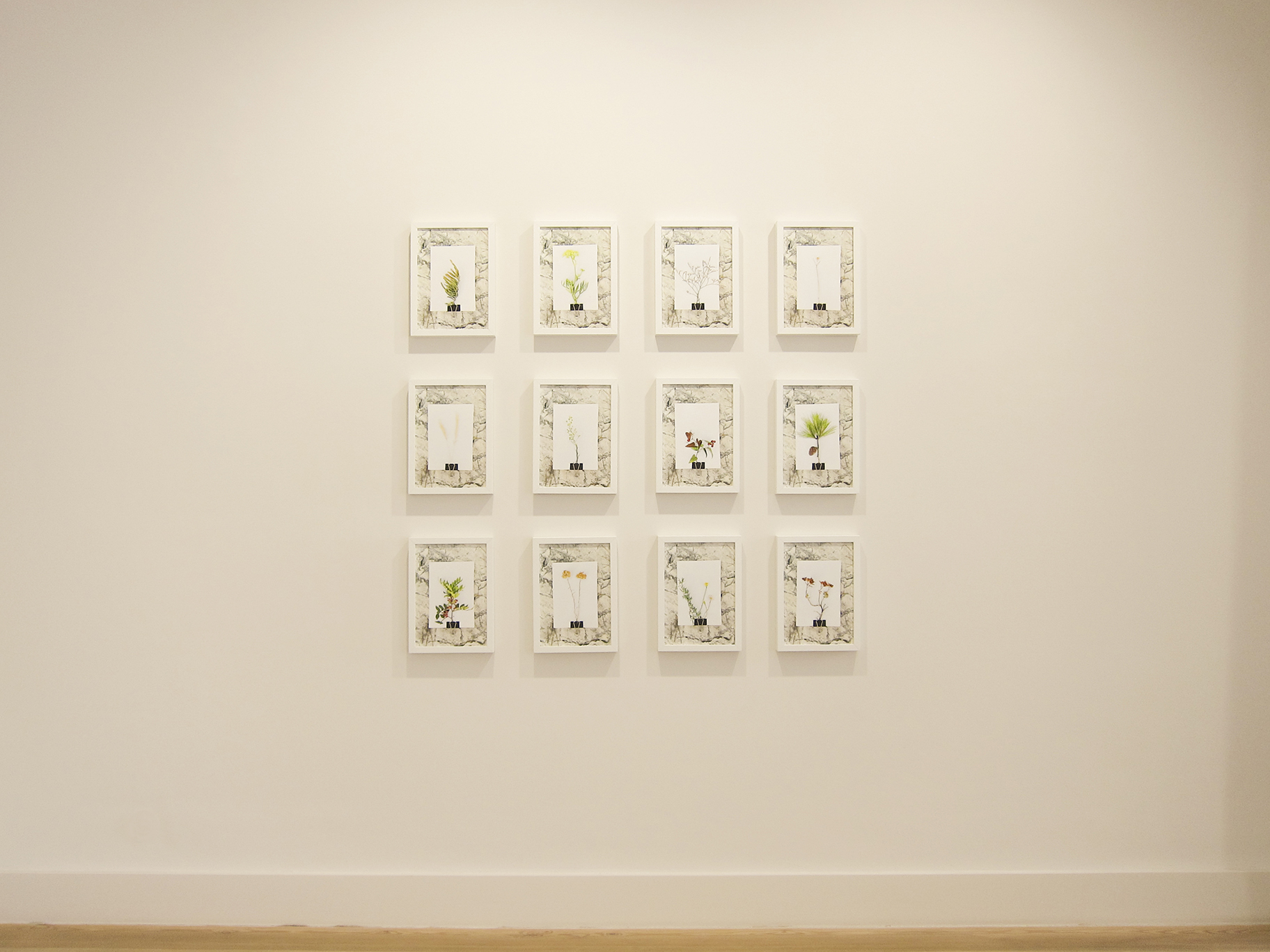
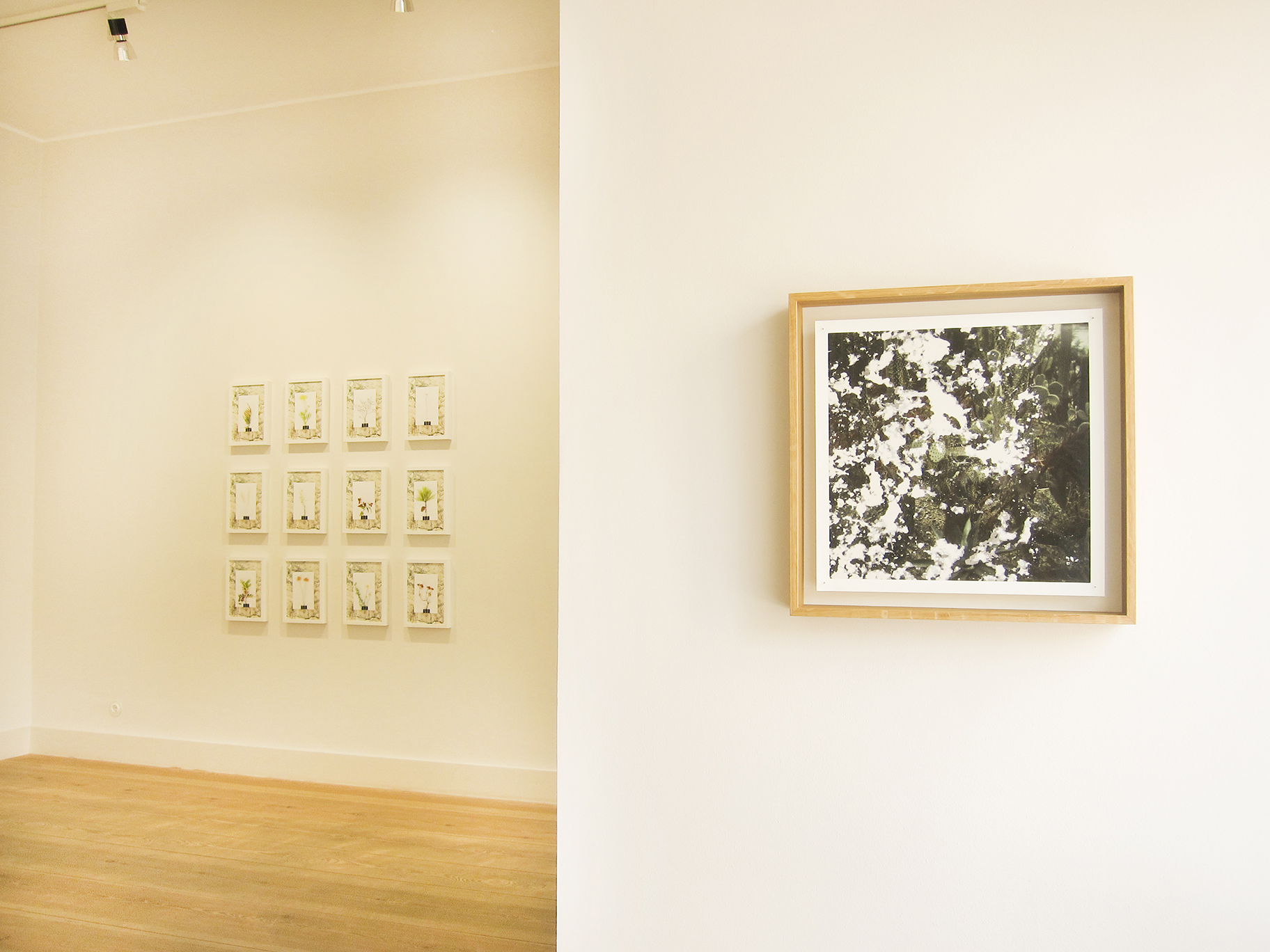
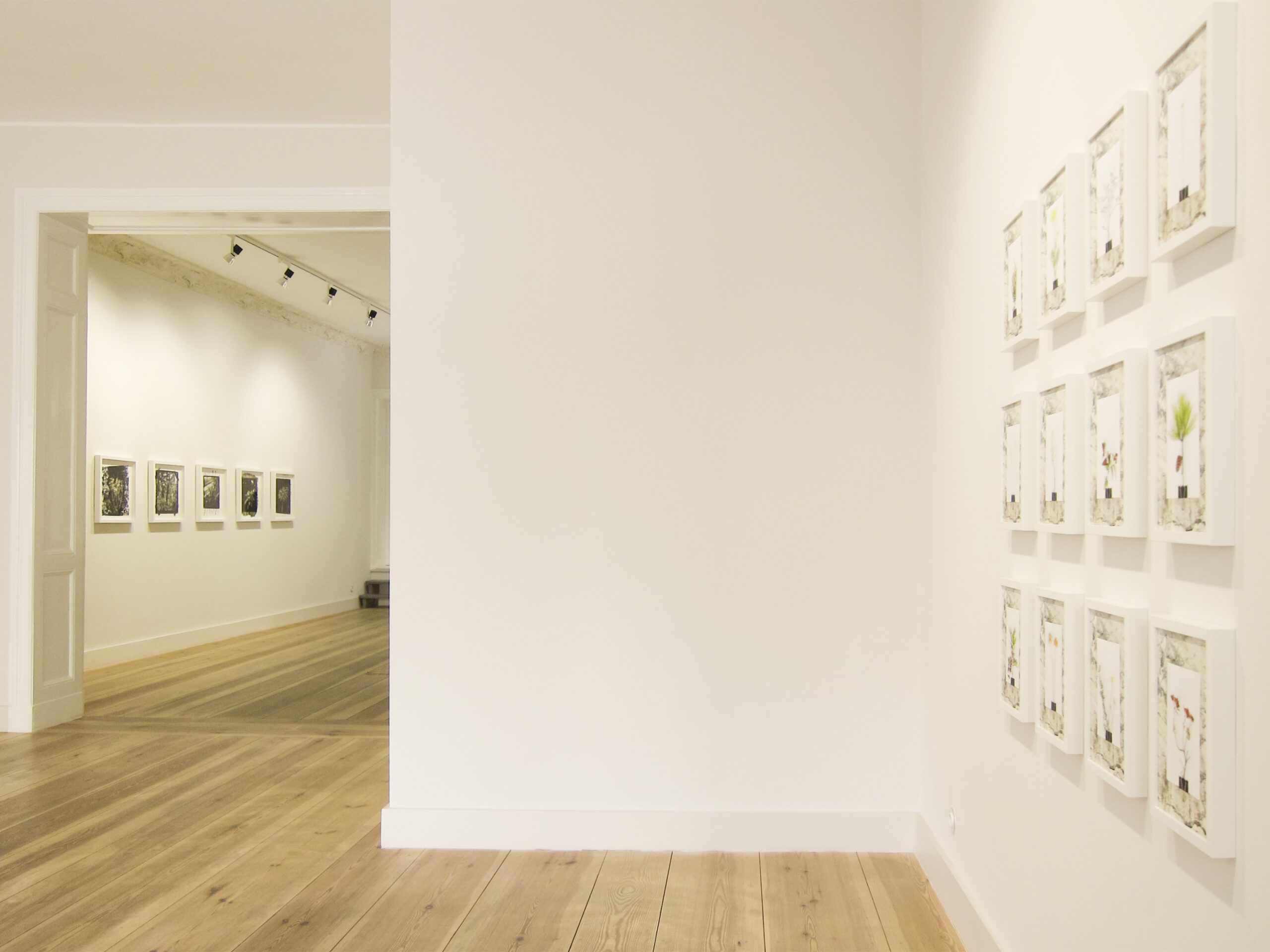
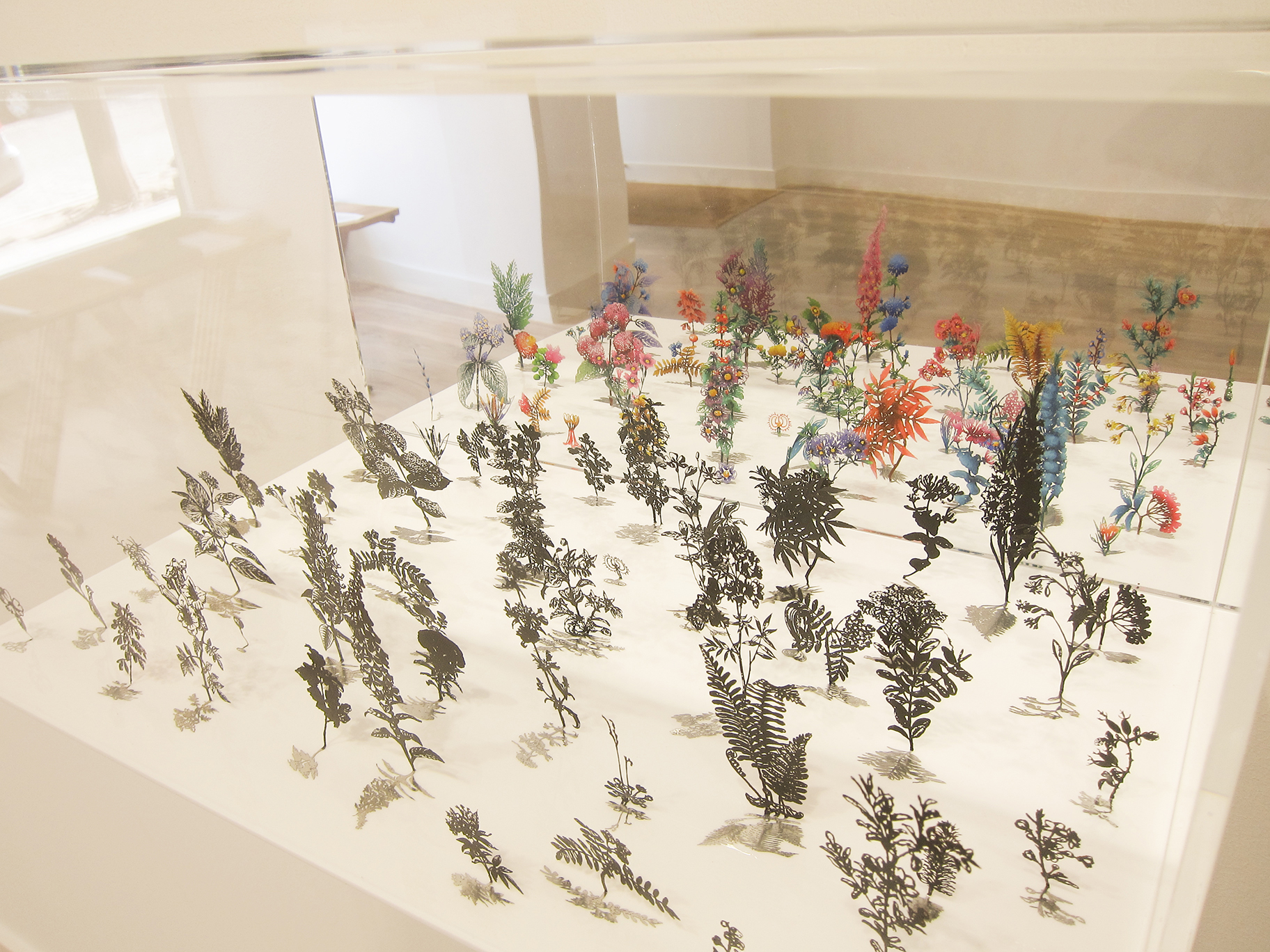
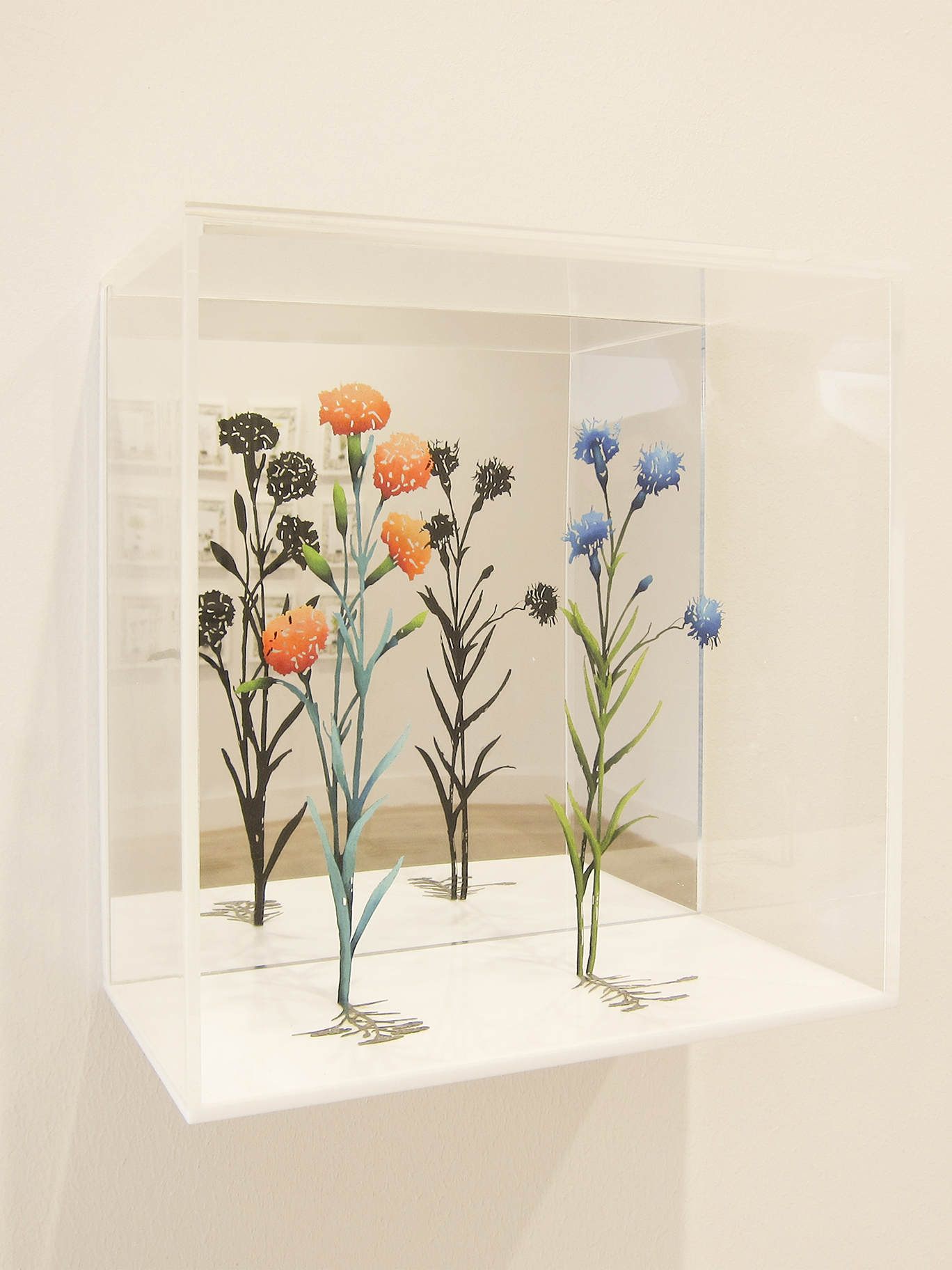
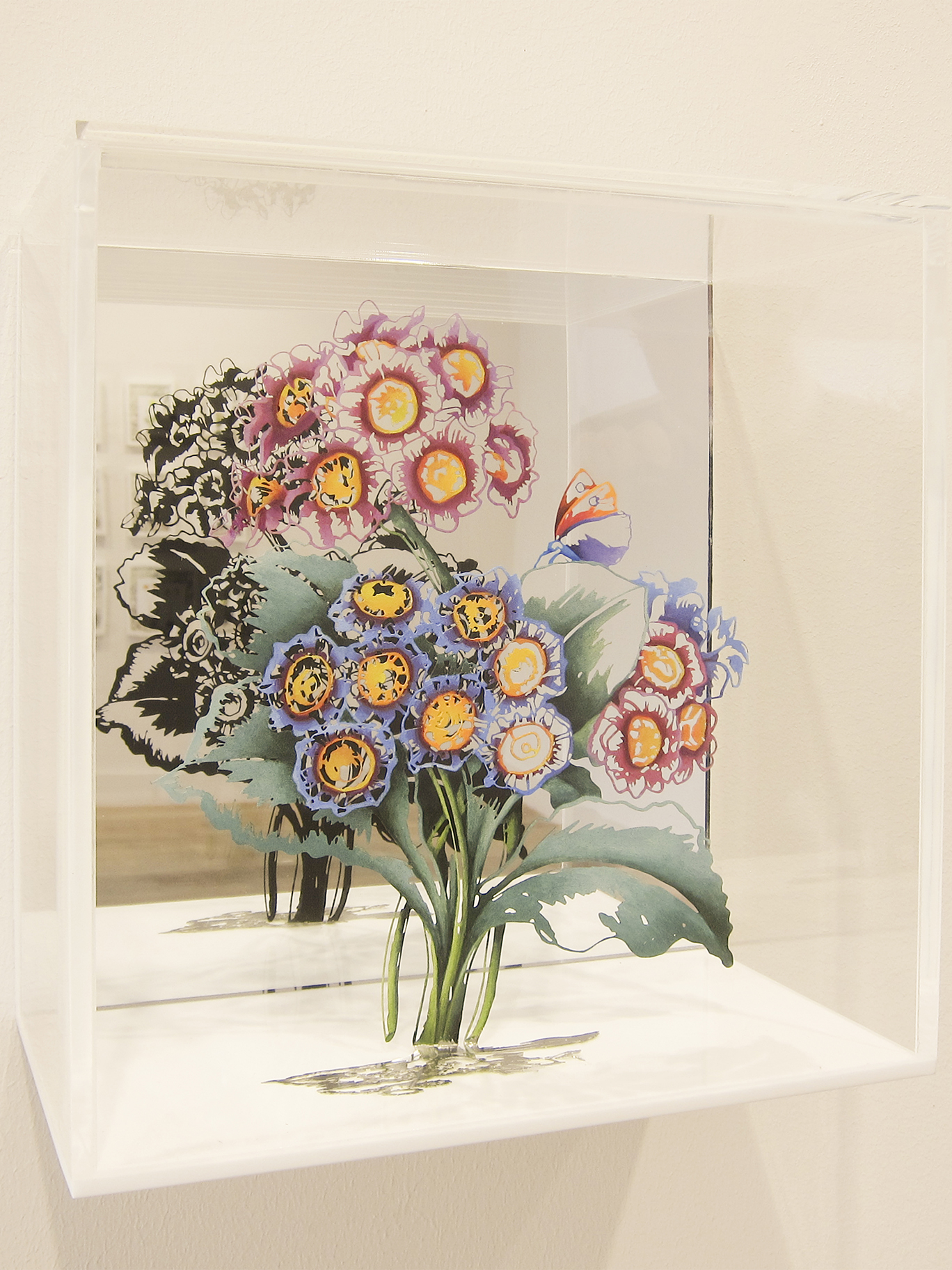
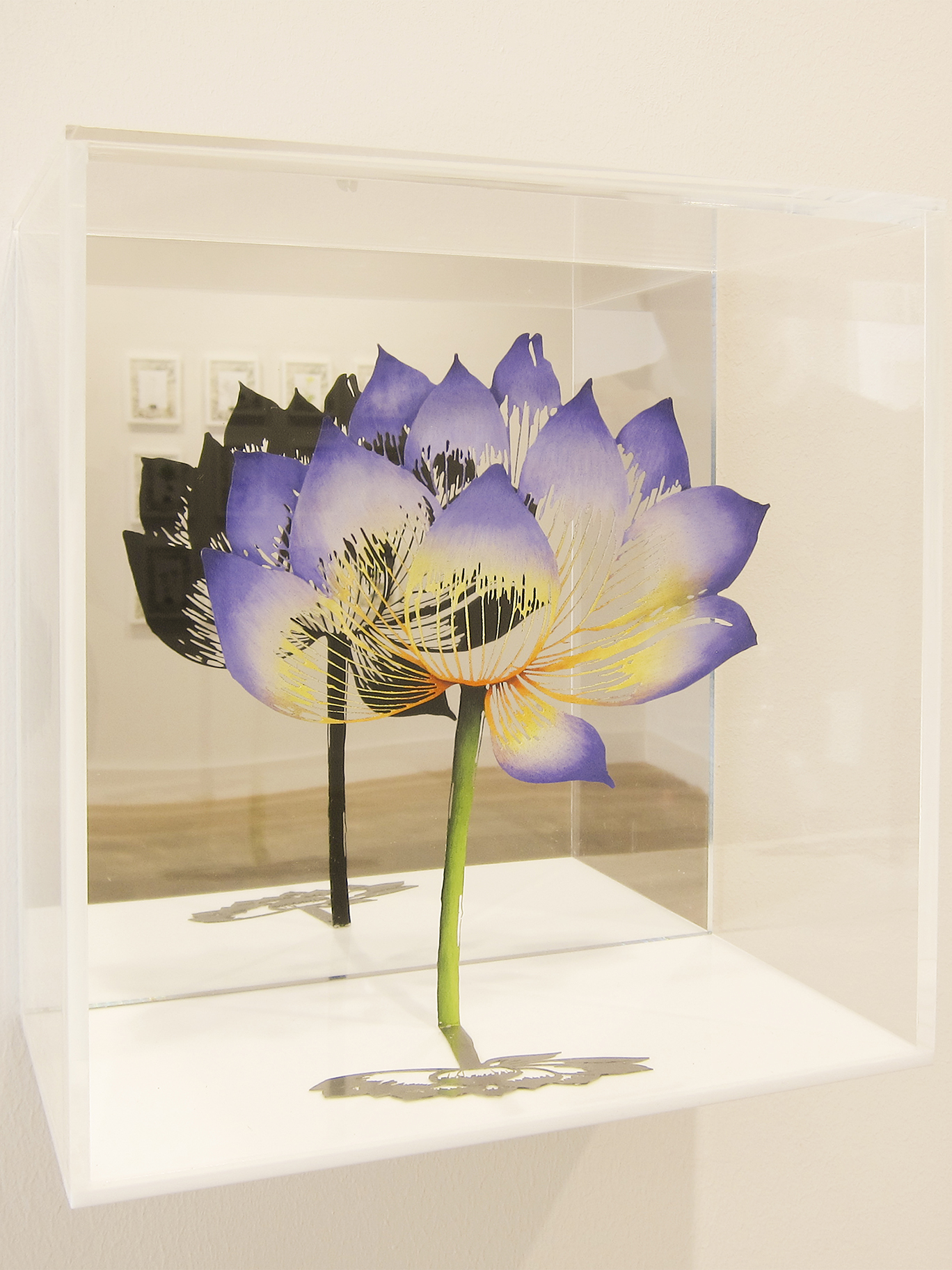
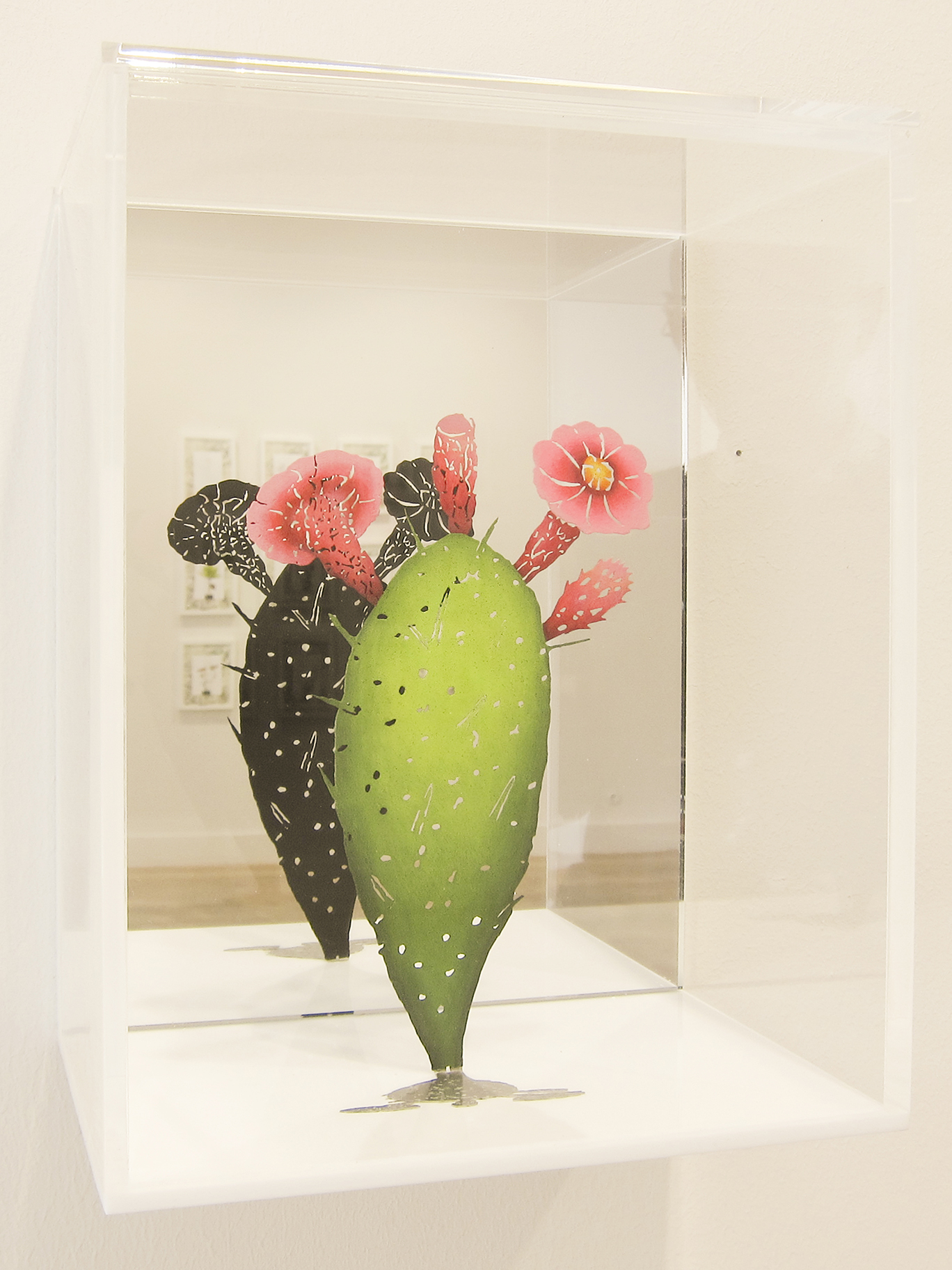
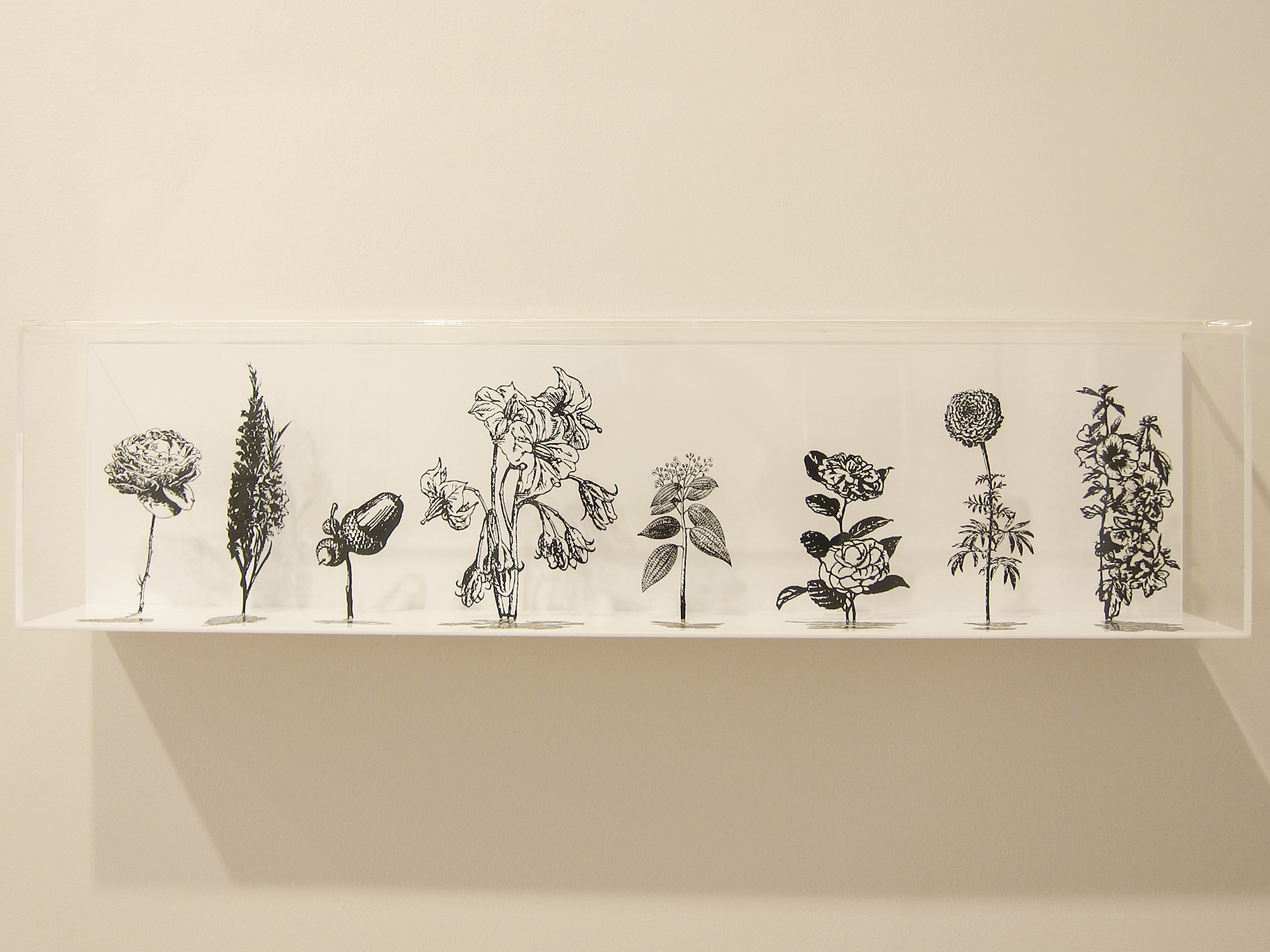
Shrubs, flowers and decay
„In die Natur hineingehen und in dieser Natur nichts als tatsächlich und für immer Zuhause zu sein, das empfände er als das große Glück.“, sagt der Burgschauspieler in Thomas Bernhard‘s Roman „Holzfällen“.
Gerade in Zeiten der Umbrüche und Veränderungen scheint Natur das einzig Tröstliche zu sein. Gibt sie doch die Gewissheit, dass Leben weitergeht und sich immer wieder neu orientiert. Gerade an den wenigen vom Menschen unberührten Orten, entwickelt sich eine große Vielfalt – sie ist Bedingung für Leben. Im Zeitalter des Anthropozäns gibt es fast keine Orte mehr, in die der Mensch nicht eingegriffen hätte. Obwohl wir uns wünschen, „in der freien Natur, [….], nicht in ihr eingesperrt, überhaupt in der Natur, nicht in der Künstlichkeit“ (Holzfällen) zu sein, lässt es sich fast nicht mehr erleben.
In der Ausstellung „Stauden, Blumen und Verfall“ entdeckt die junge Fotografin Tilyen Mucik (*1995 Ljubljana) die Vielfalt der Natur, der Bildhauer Zadok Ben-David (*1949 Bachan, Jemen) erschafft sie mit eigener Hand. Künstliche und natürliche Natur treffen aufeinander. In der Natur spielt bei der Entwicklung von Vielfalt Zufall eine große Rolle, diesen möchte der Mensch in seinem Schaffen möglichst ausschliessen. Vorhersehbare Beständigkeit ist ihm ein großes Gut. Die in Zadok Ben-Davids weltweit gezeigtem „Blackfield“ dargebotene Vielfalt ist geplant, nicht zufällig entstanden. Es ist eine Fläche bestehend aus fingergroßen Blumen, wie ein Scherenschnitt aus Edelstahl geschnitten. Je nach Größe der Fläche sind es Hunderte oder Tausende, auf der einen Seite farbig, ein Meer von Farben, auf der anderen schwarz, ein Meer filigraner Formen. Die eine Seite nehmen wir mit den Sinnen wahr, die andere mit dem Verstand, im Herumgehen bewegen wir uns vom sinnlichen zum analytischen Betrachten und zurück. Wir hatten ein Blackfield 2009 in der Galerie, diesmal zeigen wir ausgewählte Einzelstücken.
Tilyen Mucik Serie „Halophytes“ entstand während eines Aufenthalts am Strand in Kroatien. Auf den Strandspaziergängen betrachtete sie die um sie herum wachsenden kleinen Pflanzen und stellte bei nährerem Hinsehen fest, dass sie alle verschieden waren. „Upon closer inspecton of the flora, I realised numerous species of plants grew in this area –“. Sie nahm ein Stück weißes Papier, legte sie einzeln darauf und dokumentierte Viefalt und Grazie der unscheinbaren Flora. Dazu schreibt sie „I once again marvel at the miracle of evolution and beauty of mother nature, at the eternal batles for survival and the wonderful diversity of the world of plants.“ In den „Shrubs“ versucht sie durch nachträgliche Bearbeitung der Fotos mit der Hand, die durch das Fotografieren verloren gegangene Natürlichkeit wieder zurückzubringen. „With the photographic process I robbed the nature of its natural; it contained nothing organic, it became sterile and not wild anymore. I needed to return what I have taken – I started adding the natural to the photographic medium.“ Sie koloriert oder stickt mit in der Natur gewonnenem Material oder vergräbt den fotografischen Film in die Erde. In der neuesten Arbeit koloriert sie nur Teile des sonst schwarz/weißen Fotos und schafft ein Dokument des Verfalls. Wir zeigen Fotos aus allen drei Serien.
Tilyen Mucik (*1995) studierte an der Visoka šola za storitve (VIST) in Lubljana und schloss das Studium 2018 ab mit dem Projekt Flora Femina, in dem weibliche und botanische Motive fotografisch miteinander verband. 2013 erhielt sie den ersten Preis beim Tresk Festival für die beste Konzertfotografie, 2018 eine spezielle Erwähnung der Jury. Bei den Rovinj Fototagen wurde sie zweite in der Kategorie „Art Concept“ mit der Fotoserie „Pink“. Ihre Arbeiten wurden bereits vielfach ausgestellt, u.a. im Museum of Arts and Craft, Kranj, im Museum für Zeigenössische Kunst, Zagreb und im Enthnografischen Museum, Barcelona. Sie beendet gerade ihr Studium der Fotografie an der Akademie für Bildende Künste und Design, Ljubljana.
Zadok Ben-David (*1949) ist ein vielfach ausgezeichneter, in London lebender Künstler, seine Skulpturen, Installationen und öffentlichen Arbeiten sind weltweit zu sehen, u.a. in London und Tel Aviv. Evolution und die menschliche Natur sind ein grundlegendes Thema seiner Arbeit, die häufig als poetisch und magisch bezeichnet wird, sie bewegt sich zwischen feinen Miniaturen und monumentalen Installationen. Er arbeitet überwiegend in Metall. 1988 repräsentierte er Israel auf der Biennale Venedig, nahm in der Folge an weltweit an zahlreichen Biennalen teil und seine Arbeit wurde international in Museen ausgestellt, in Europa, Australien, Amerika, Zentralasien and den Mittleren Osten. Gleich nach seiner Geburt in Bayhan, Jemen, wanderte seine Familie nach Israel aus. Er studierte Bildhauerei an der St. Martin‘s School of Art in London, wo er nach abgeschlossenem Studium von 1977-1982 lehrte.
‘Going into nature and being in that nature nothing but truly and forever at home, that would feel like his greatest joy’, says the actor at Vienna’s Burgtheater in Thomas Bernhard’s novel Woodcutters.
Especially at times of upheaval and great change, nature seems the only available source of comfort. After all, it gives us the certainty that life will continue and always reorient itself. Especially at the few places that are untouched by humans, a great diversity develops, which is a condition for life. In the age of the Anthropocene, there are hardly any places left where humans have not intervened. Although we desire to be ‘in free nature […], not locked in it, just in nature, not in artificiality’ (Woodcutting), nowadays it is hardly possible to experience this anymore.
In the exhibition Shrubs, Flowers, and Decay, the young photographer Tilyen Mucik (born in Ljubljana in 1995) discovers the variety and diversity of nature, and the sculptor Zadok Ben-David (born in Bayhan, Yemen in 1949) creates it by his own hand. Artificial and natural nature meet. In nature, chance plays a large role in the development of variety, while humans in their work want to eliminate chance as much as possible. Predictable consistency is highly important to them. The variety presented in Zadok Ben-David’s Blackfield, which has been exhibited internationally, is planned, not the result of chance. It is a field consisting of finger-sized flowers, cut like silhouettes from stainless steel. Depending of the size of the field, they amount to hundreds or even thousands, on one side in colour, on the other black: a sea of delicate shapes. One side, we perceive with our senses, the other one rationally, and while walking around it, we oscillate between sensual and analytical perception. In 2009, we had one Blackfield in the gallery; this time, we are showing select individual pieces.
Tilyen Mucik’s series was conceived when the artist spent time at the beach in Croatia. On her walks on the beach, she observed the small plants growing around her, and noticed on closer examination that they were all different. ‘Upon closer inspection of the flora, I realised numerous species of plants grew in this area.’ She took a white sheet of paper, placed single plants on it, and thus documented the variety and elegance of the inconspicuous flora. She explains: ‘I once again marvel at the miracle of evolution and beauty of mother nature, at the eternal battles for survival and the wonderful diversity of the world of plants.’ In her Shrubs, she tries through manual editing of the photographs to bring back their naturalness that has been lost through the process of photographing. ‘With the photographic process I robbed nature of its natural; it contained nothing organic, it became sterile and not wild anymore. I needed to return what I had taken – I started adding the natural to the photographic medium.’ She colours or embroiders with materials gained in nature, or buries the photographic film in the earth for a while. In her latest work, she colours only parts of the otherwise black-and-white photograph, creating a document of decay. We are showing works from all three series.
Tilyen Mucik (born in 1995) finished her graduate studies in 2018 at Visoka šola za storitve (VIST) with a thesis project Flora Femina – combining female and botanical motifs in the field of photography. In 2013 she received first prize at Tresk festival for best concert photography, and again a special jury mention in 2018. At Rovinj PhotoDays Festival she placed second in the category ”Art Concept” with her photoseries ”Pink”. Her works have been exhibited in Slovenia and abroad (Museum of Arts and Crafts – Zagreb, Museum of Contemporary Art Metelkova – Ljubljana, Ethnographic Museum – Ljubljana). She is currently finishing her master studies in Photography at the Academy of Visual art and Design in Ljubljana.
Zadok Ben-David is an award-winning, London-based artist, widely acclaimed for his sculptures, installations and public artworks. Ben-David explores themes linked to human nature and evolution. His work is often referred to as poetic and magical, always oscillating between delicate miniature-work and monumental installations. Metalworking has become Ben-David’s preferred language in contrast to the subtle optical illusions that he creates thanks to a sometimes-rough medium. Ben-David represented his country Israel at the Venice Biennale in 1988 and participated to numerous biennales worldwide. His works are exhibited in illustrious national museums and art galleries across Europe, Australia, America, Central Asia and the Middle East. Born in Bayhan, Yemen in 1949, Ben-David immigrated to Israel the same year and graduated in Advanced Sculpture from St. Martin’s School of Art, in London, where he taught from 1977-1982.
In cooperation with Galerija Fotografija, Ljubljana
